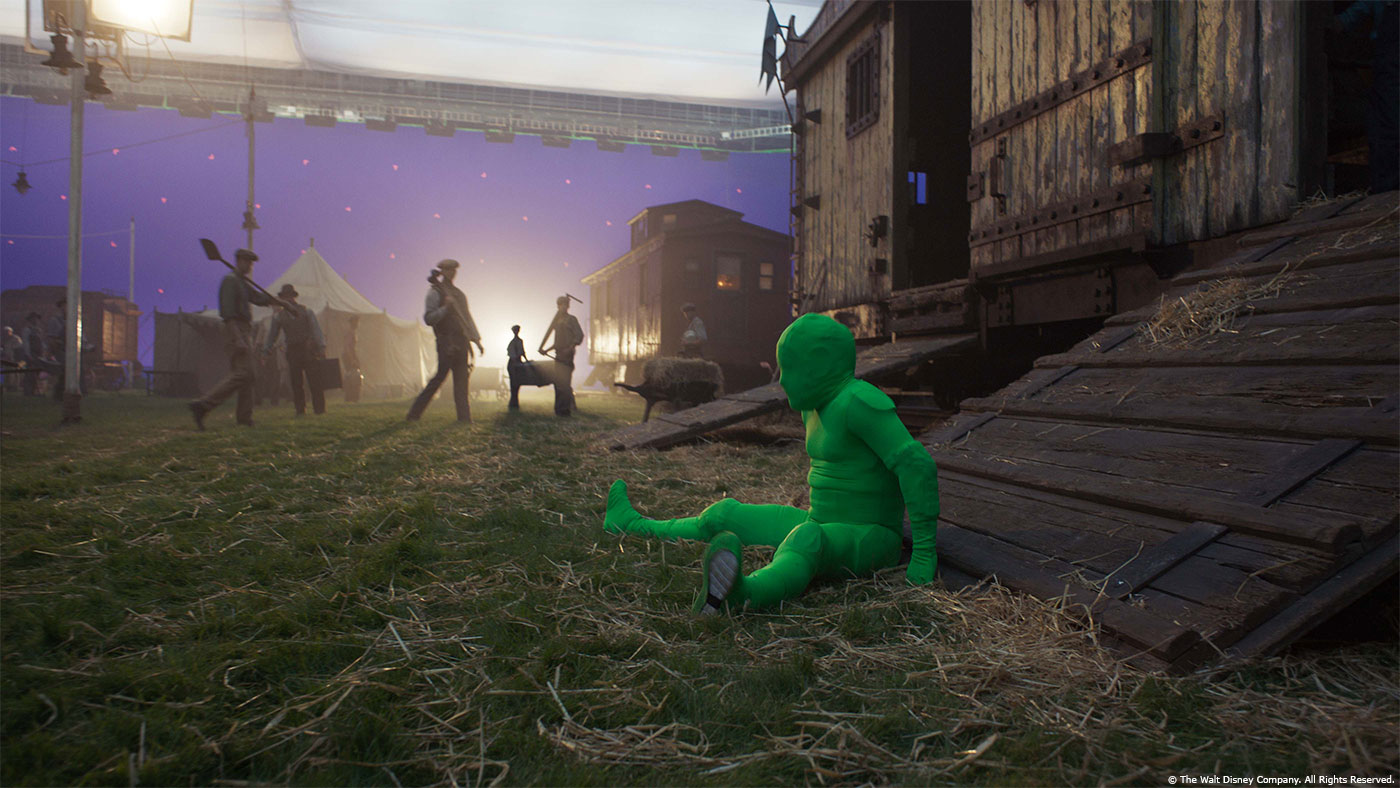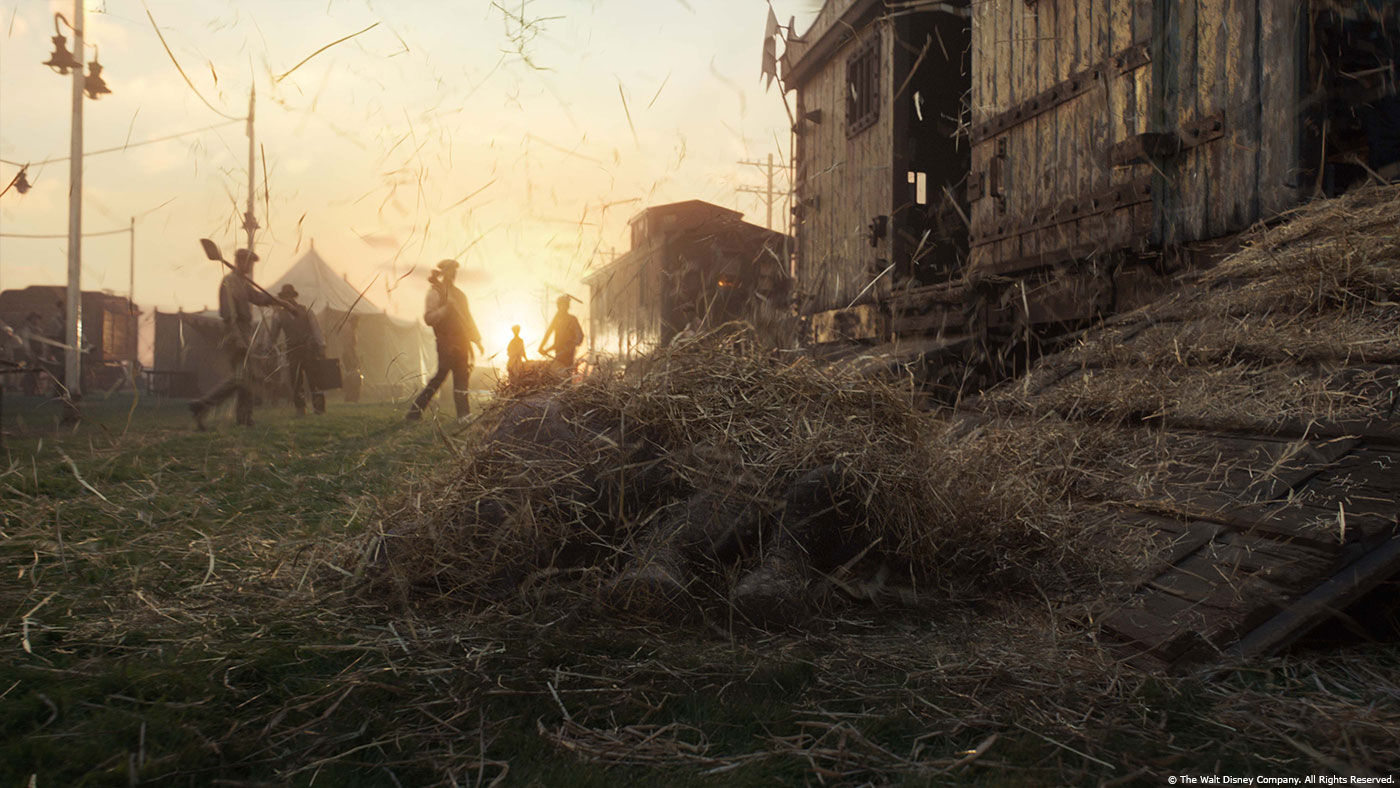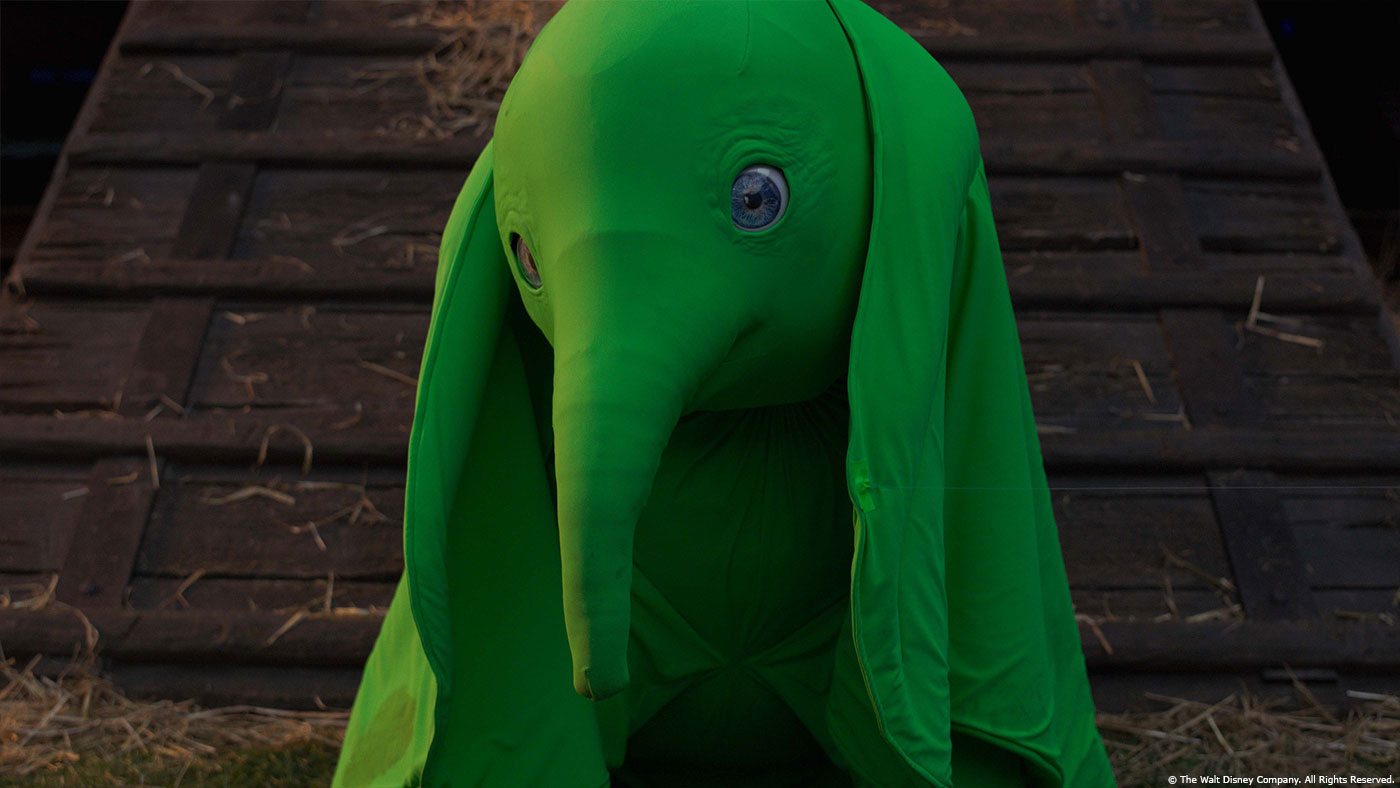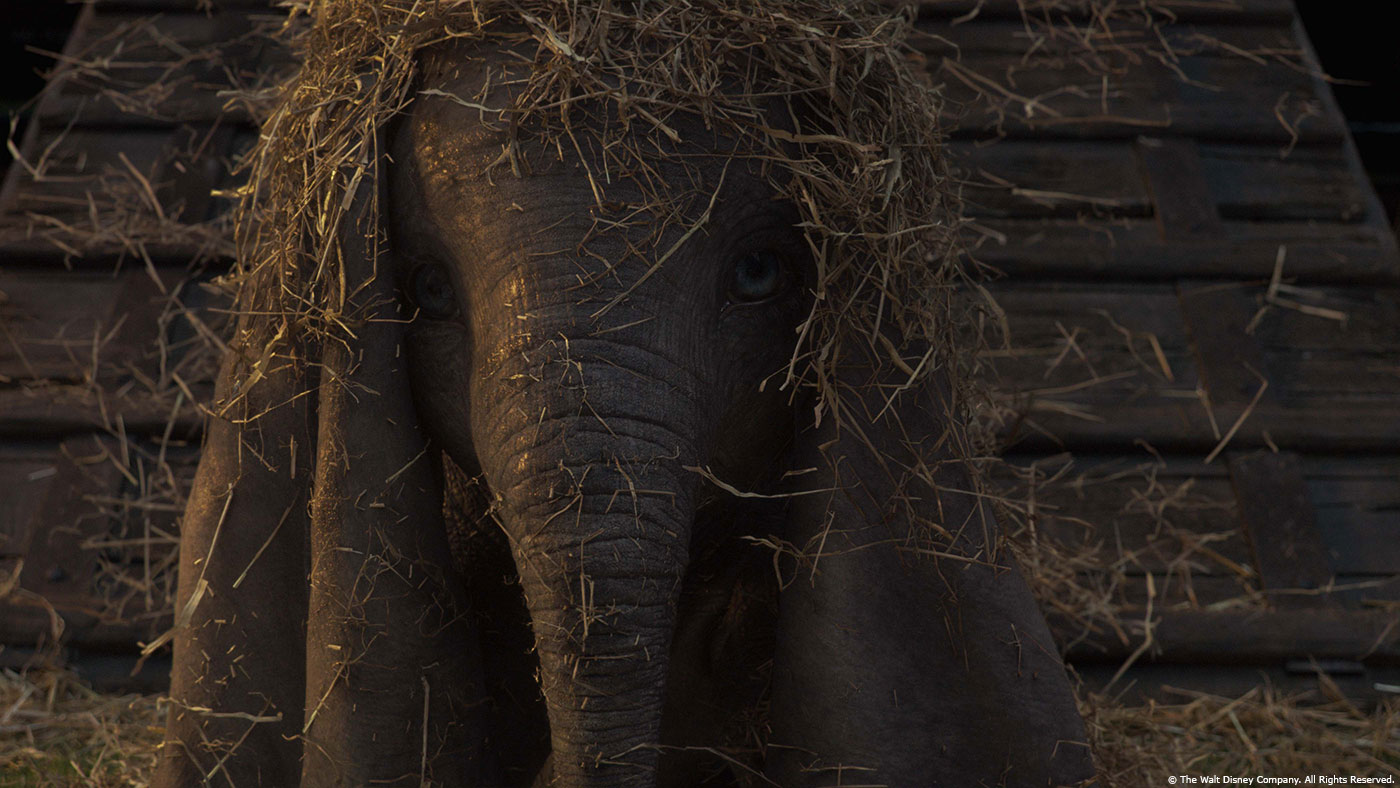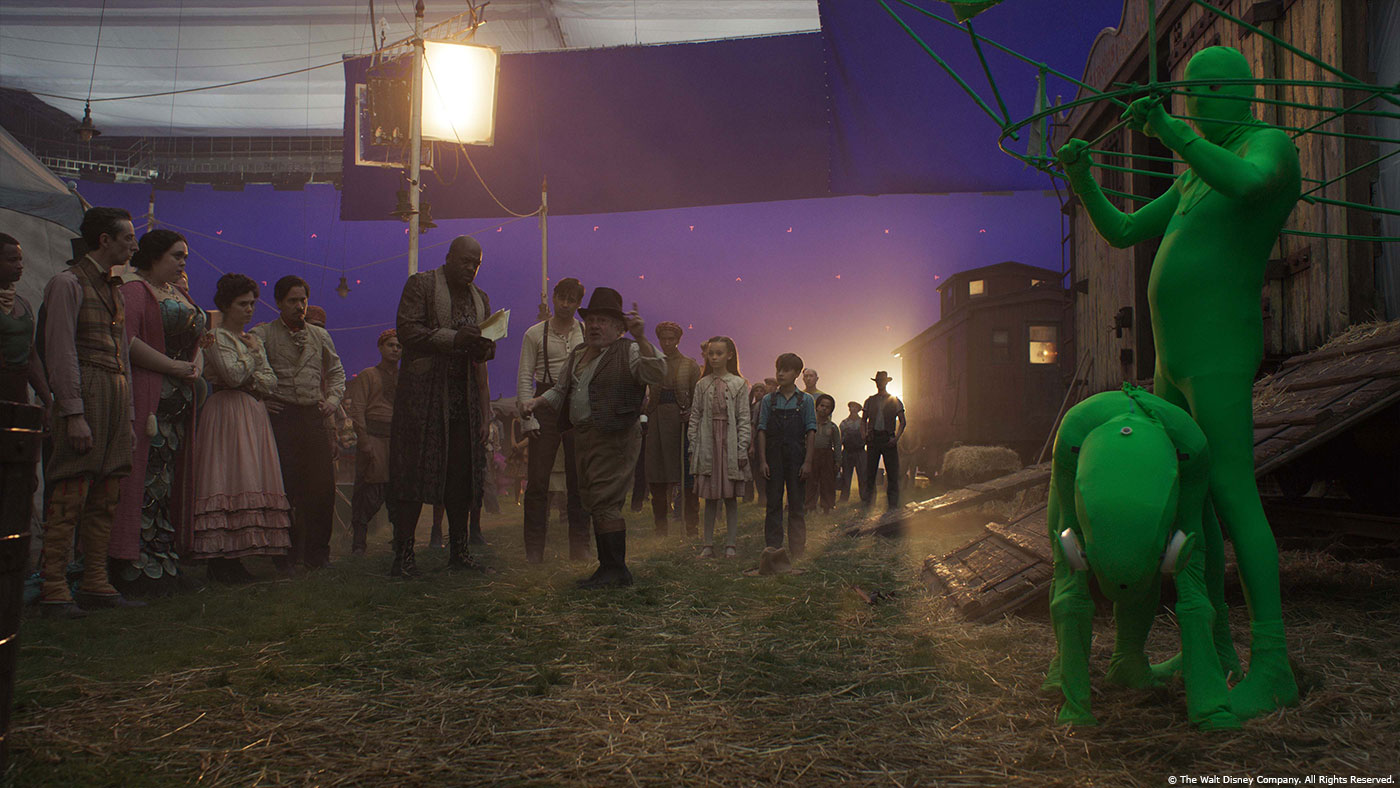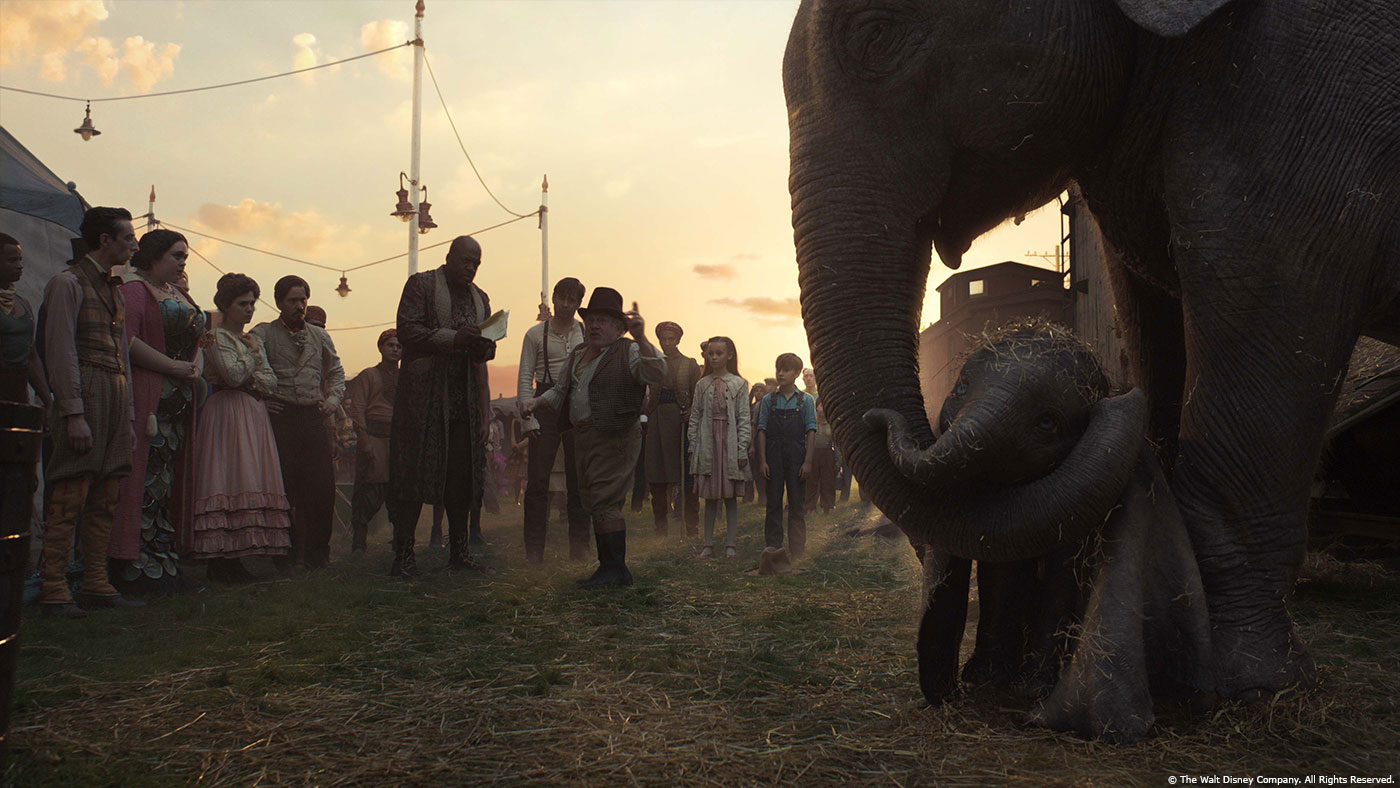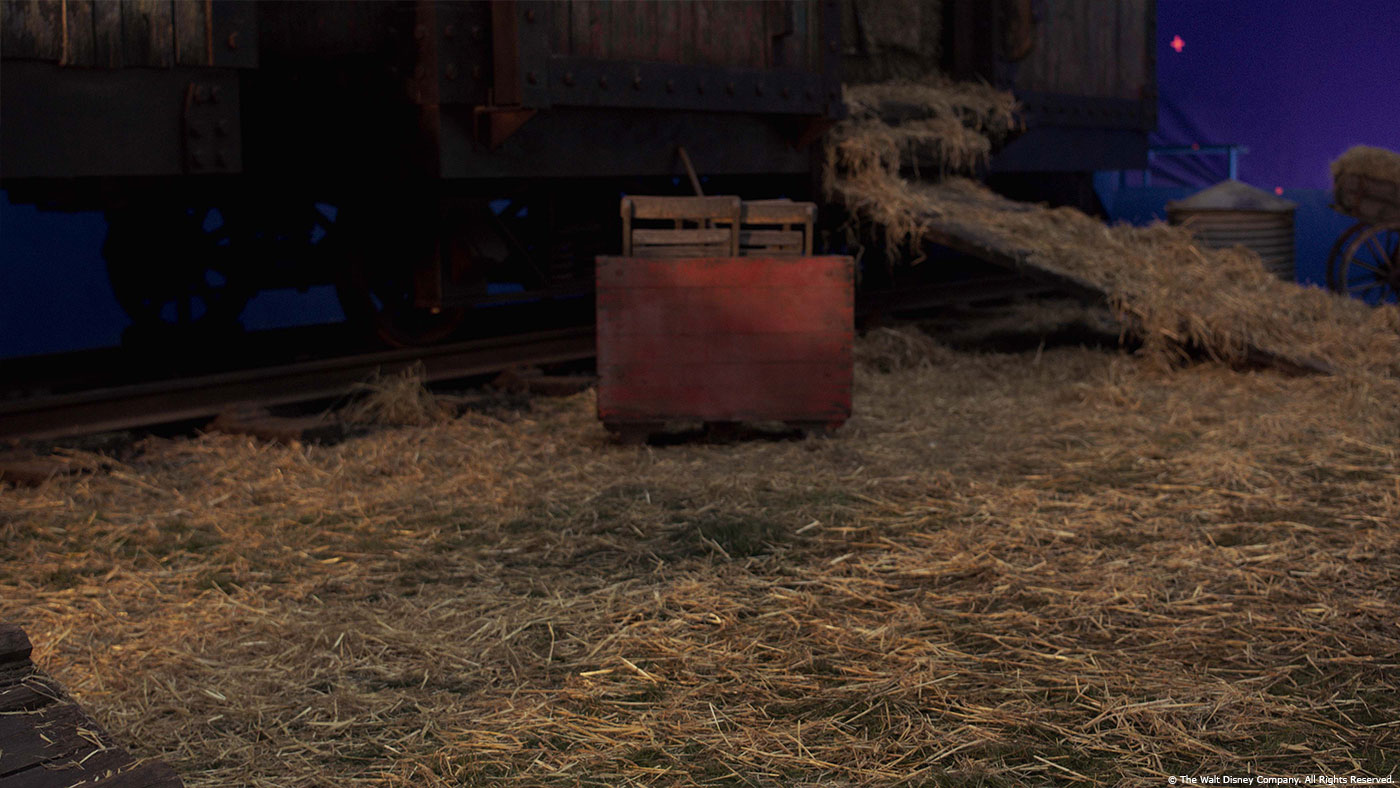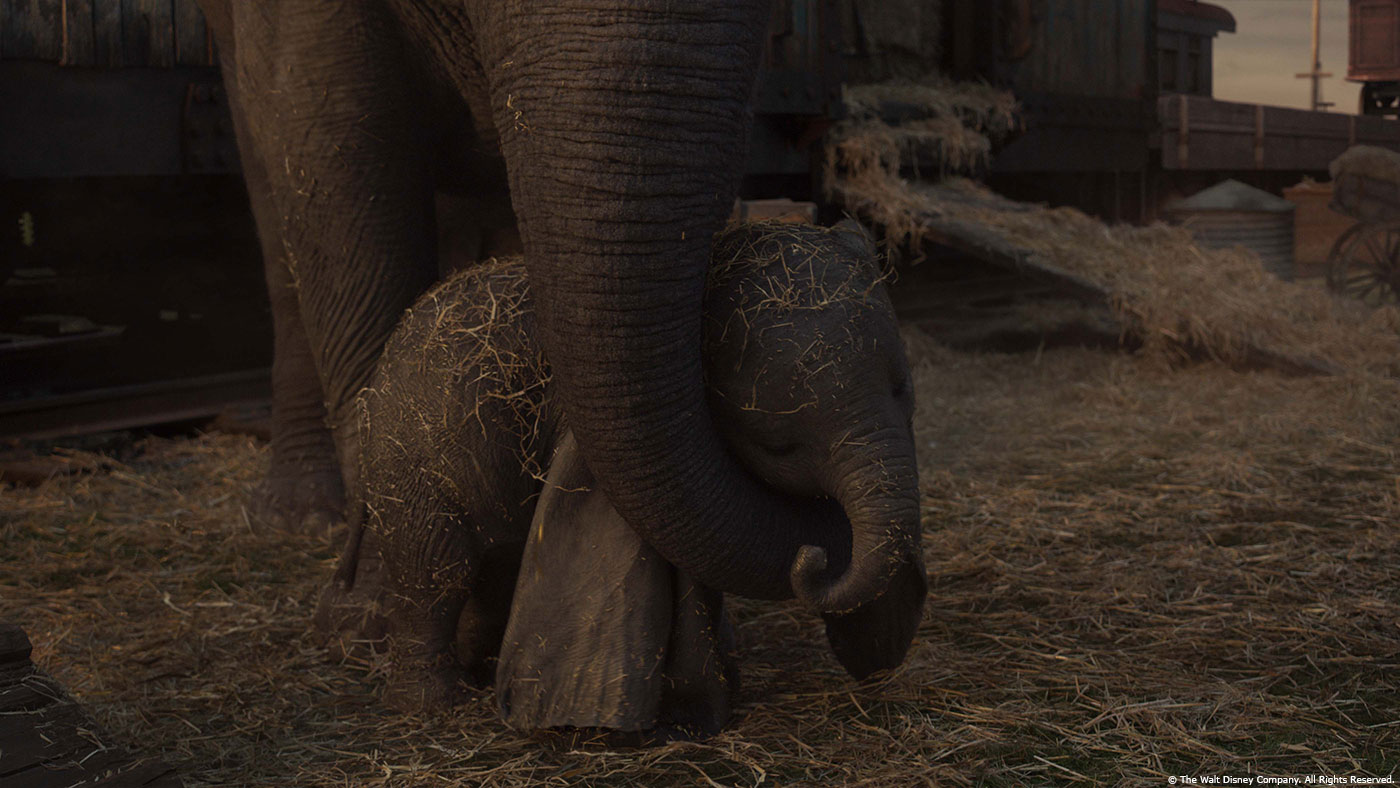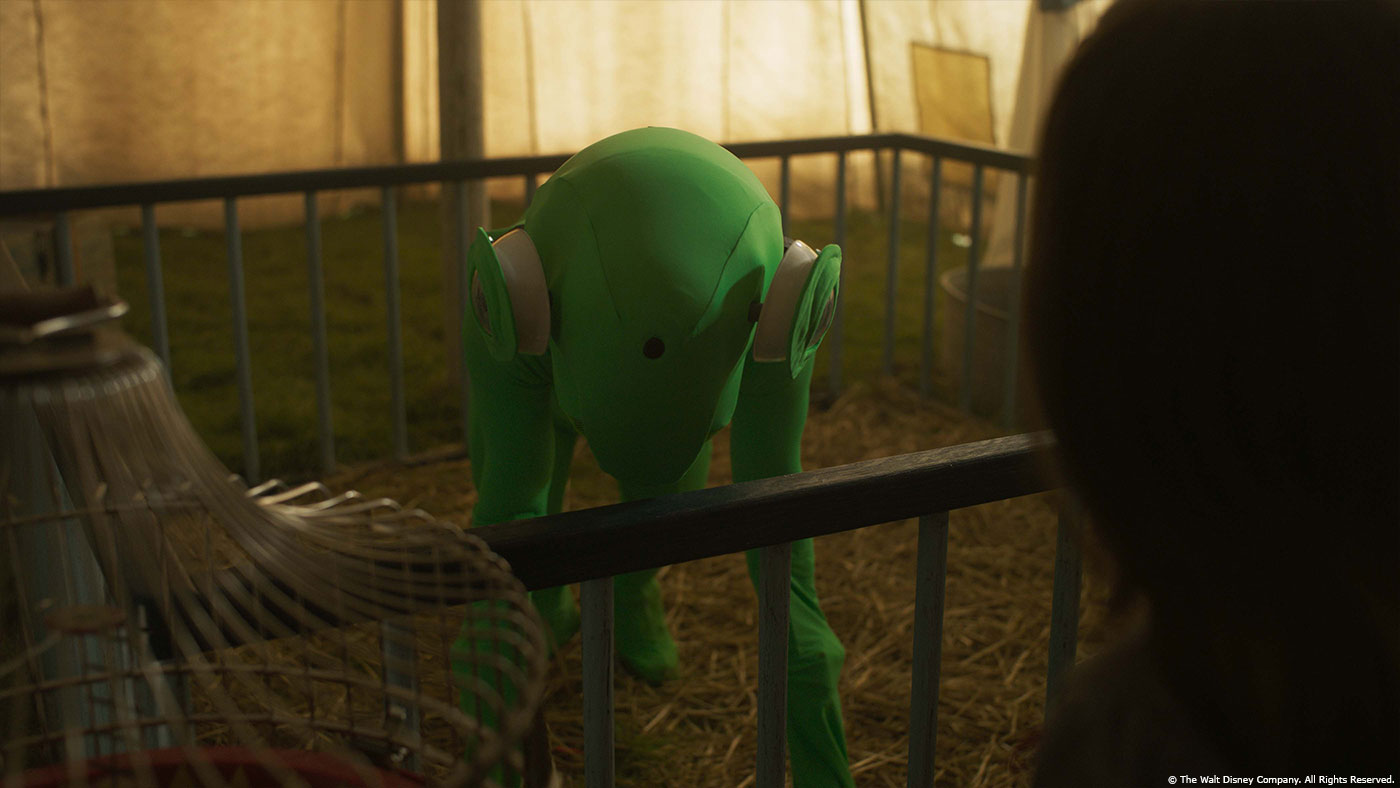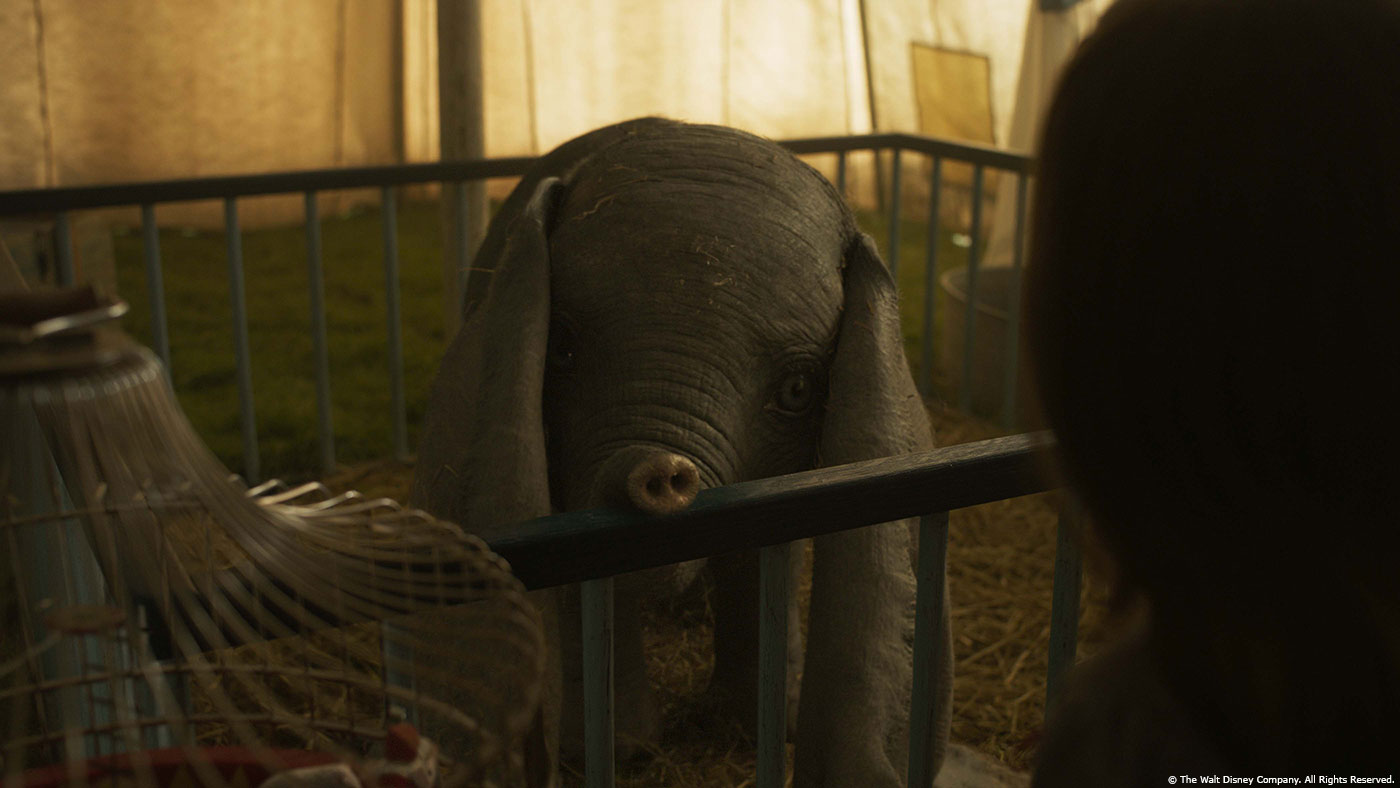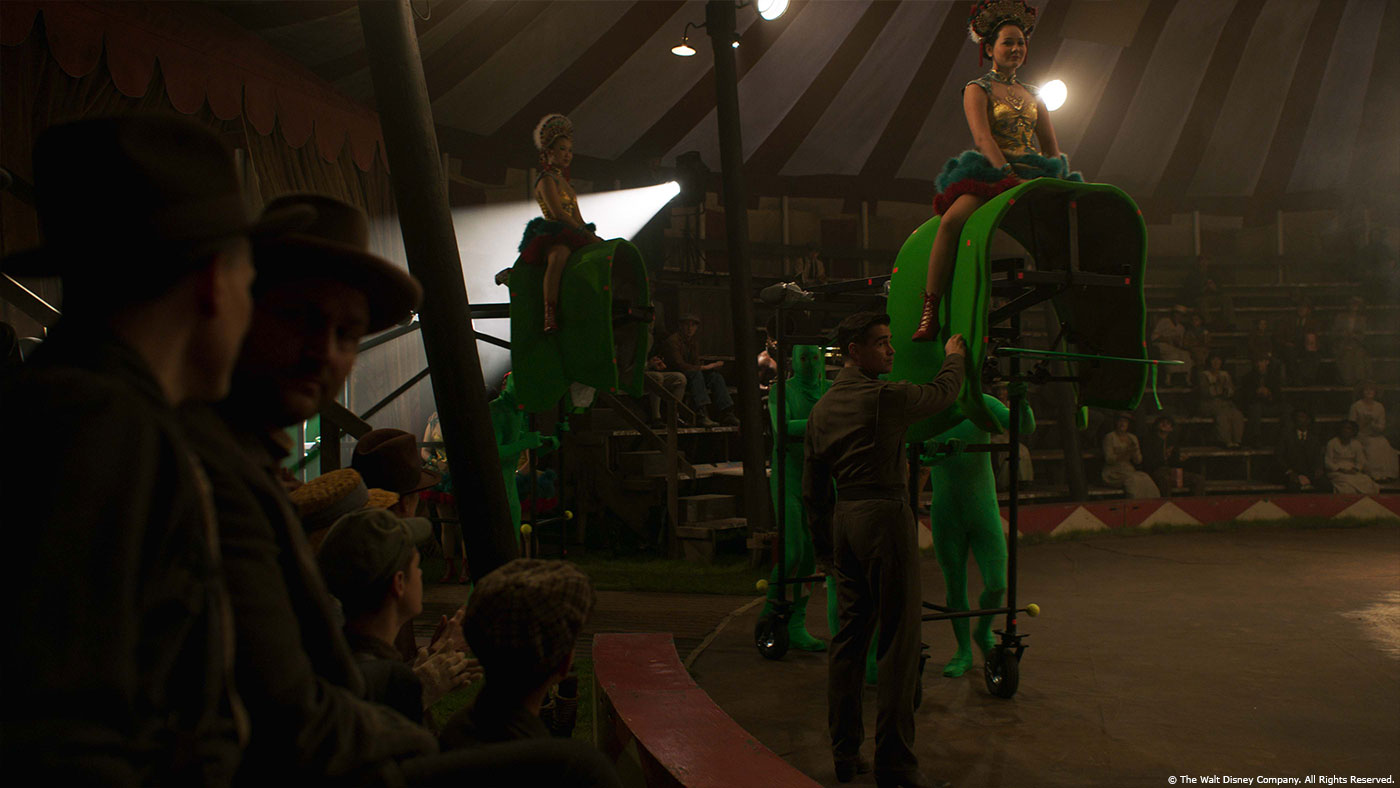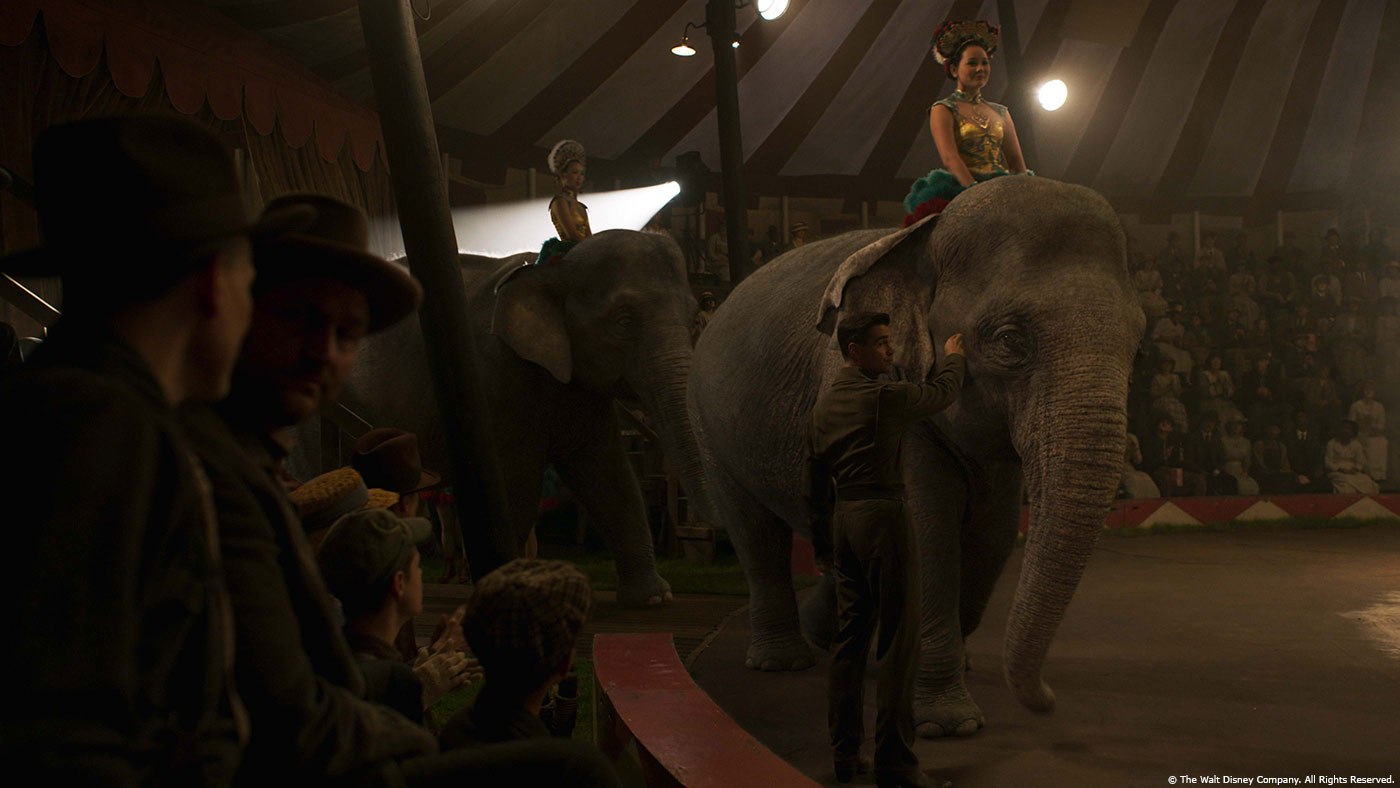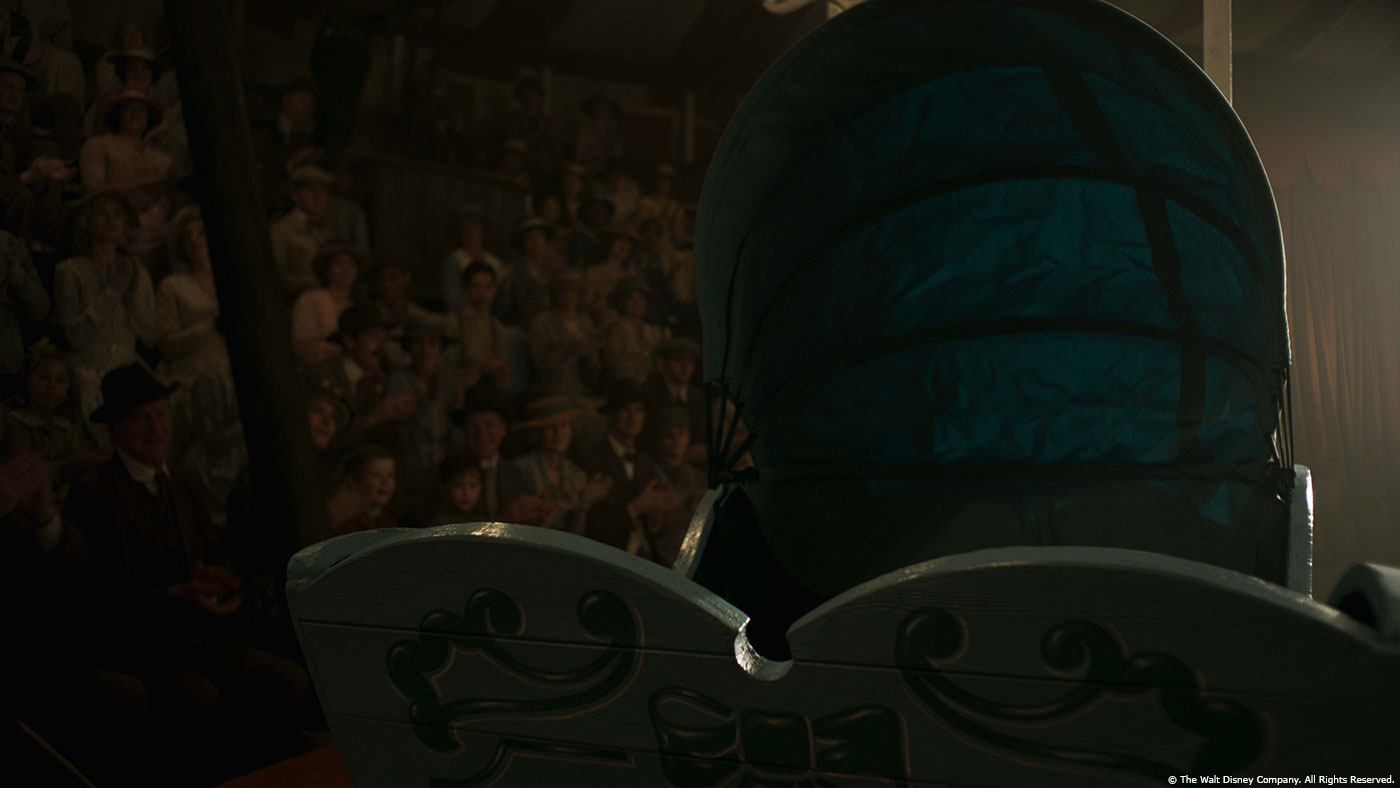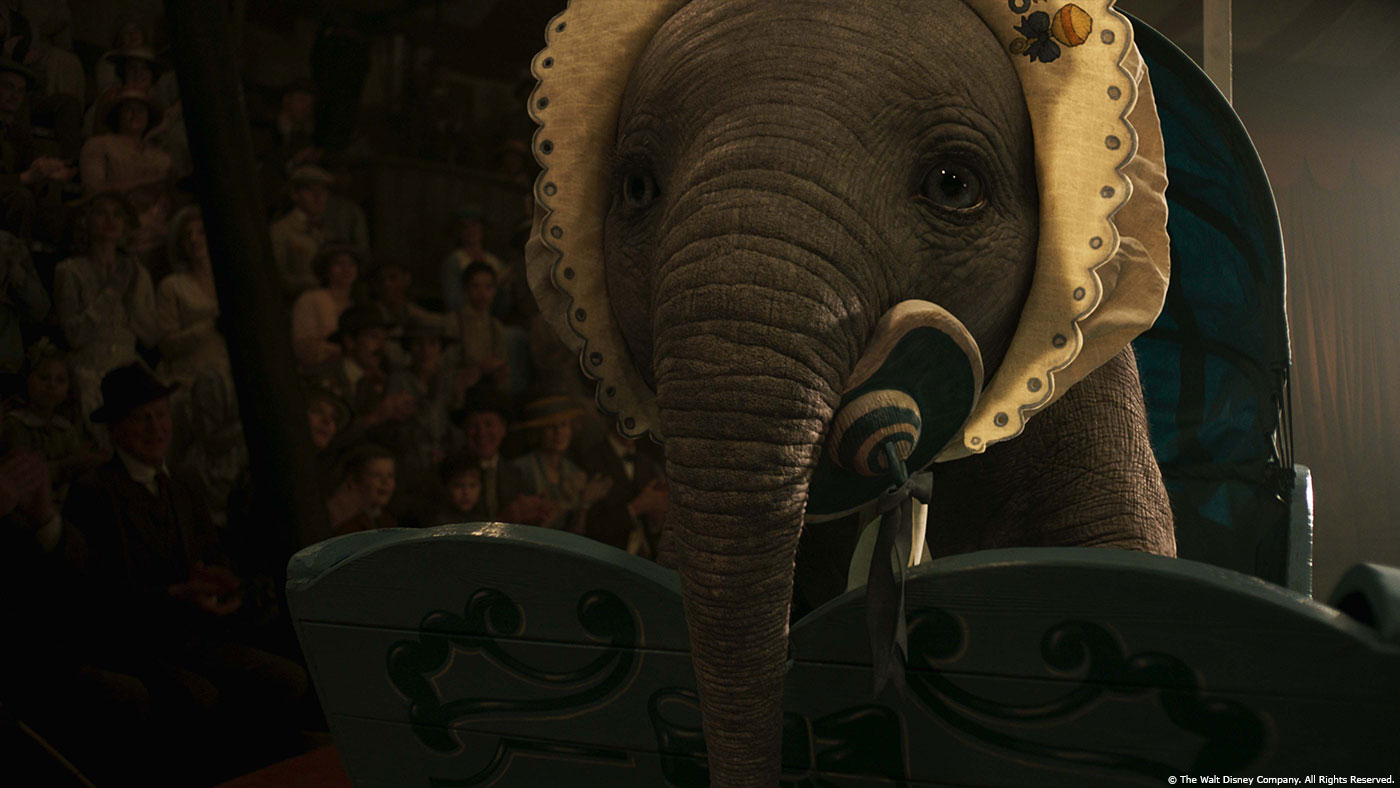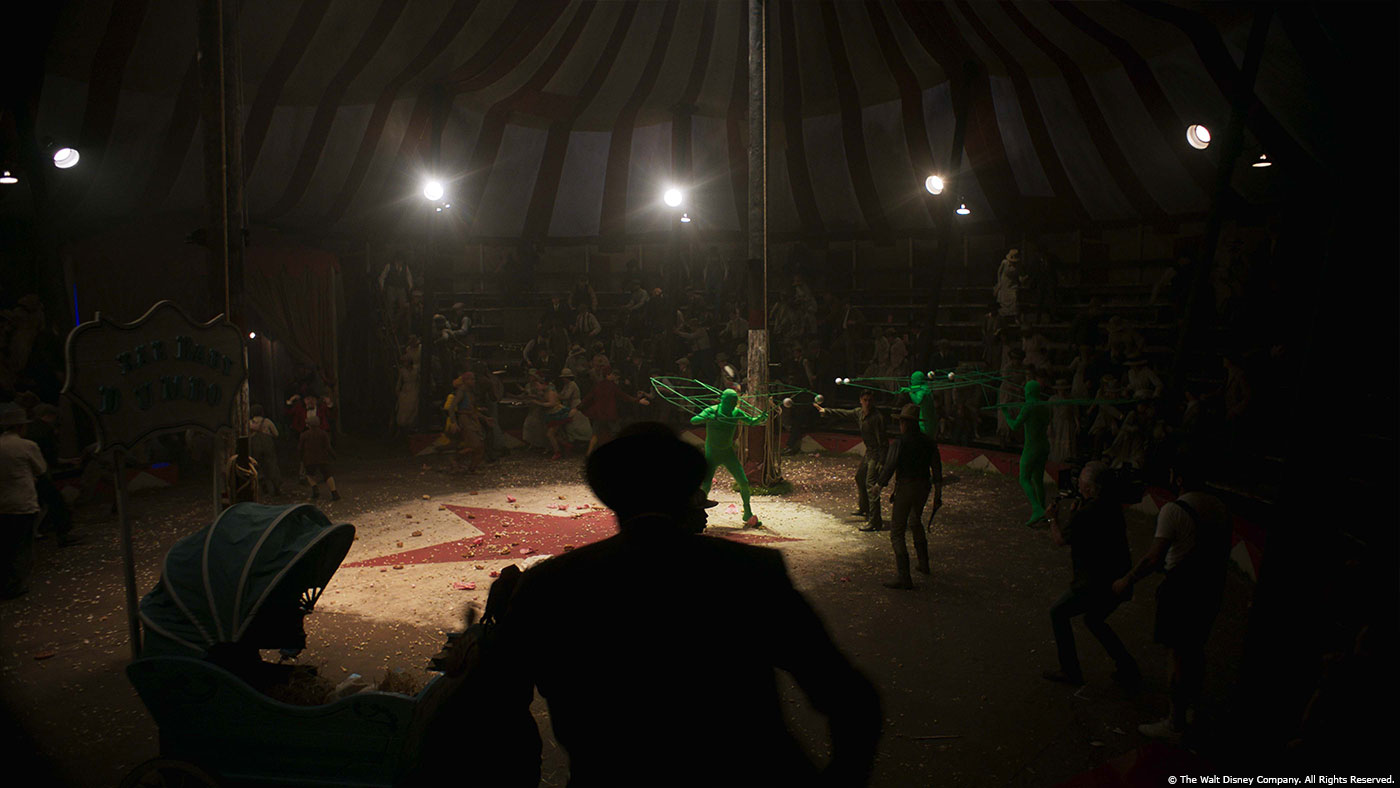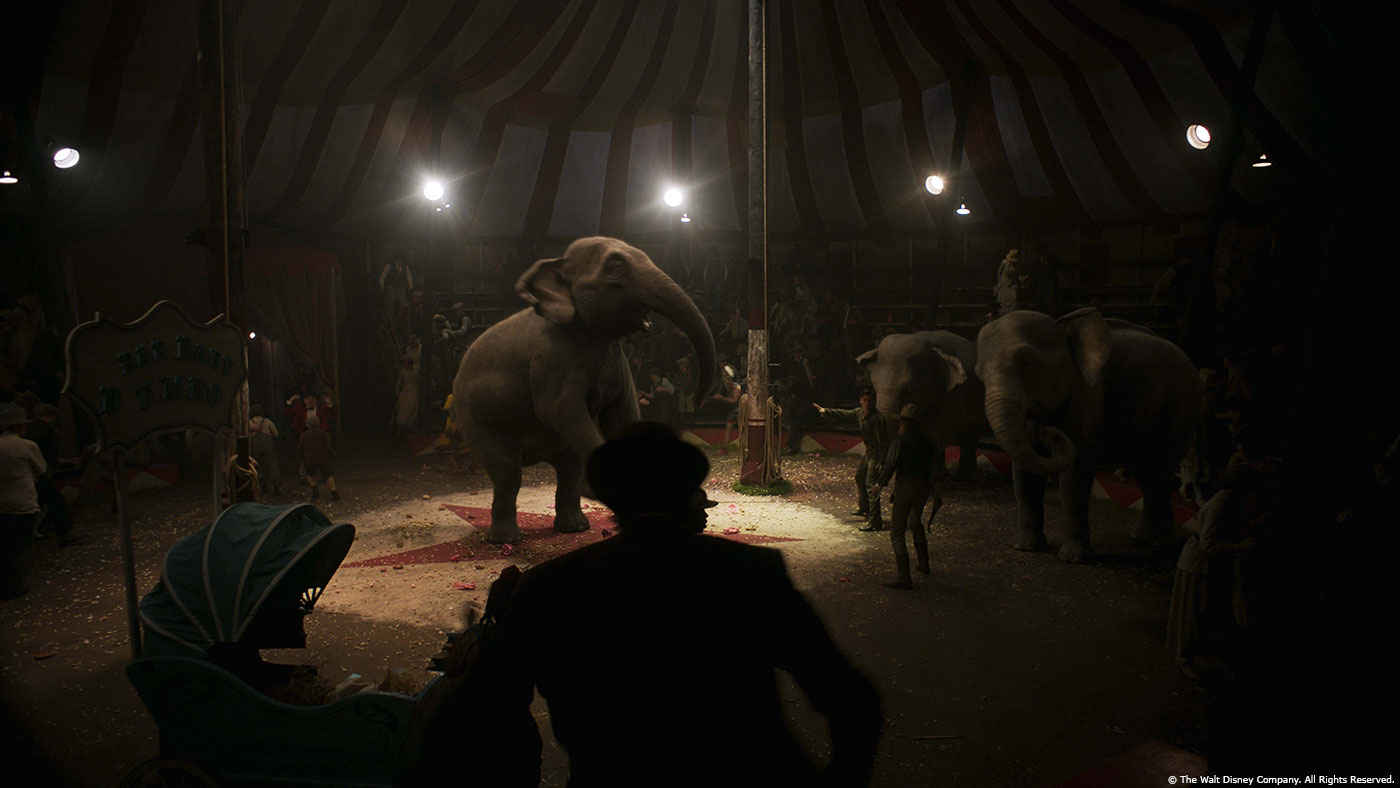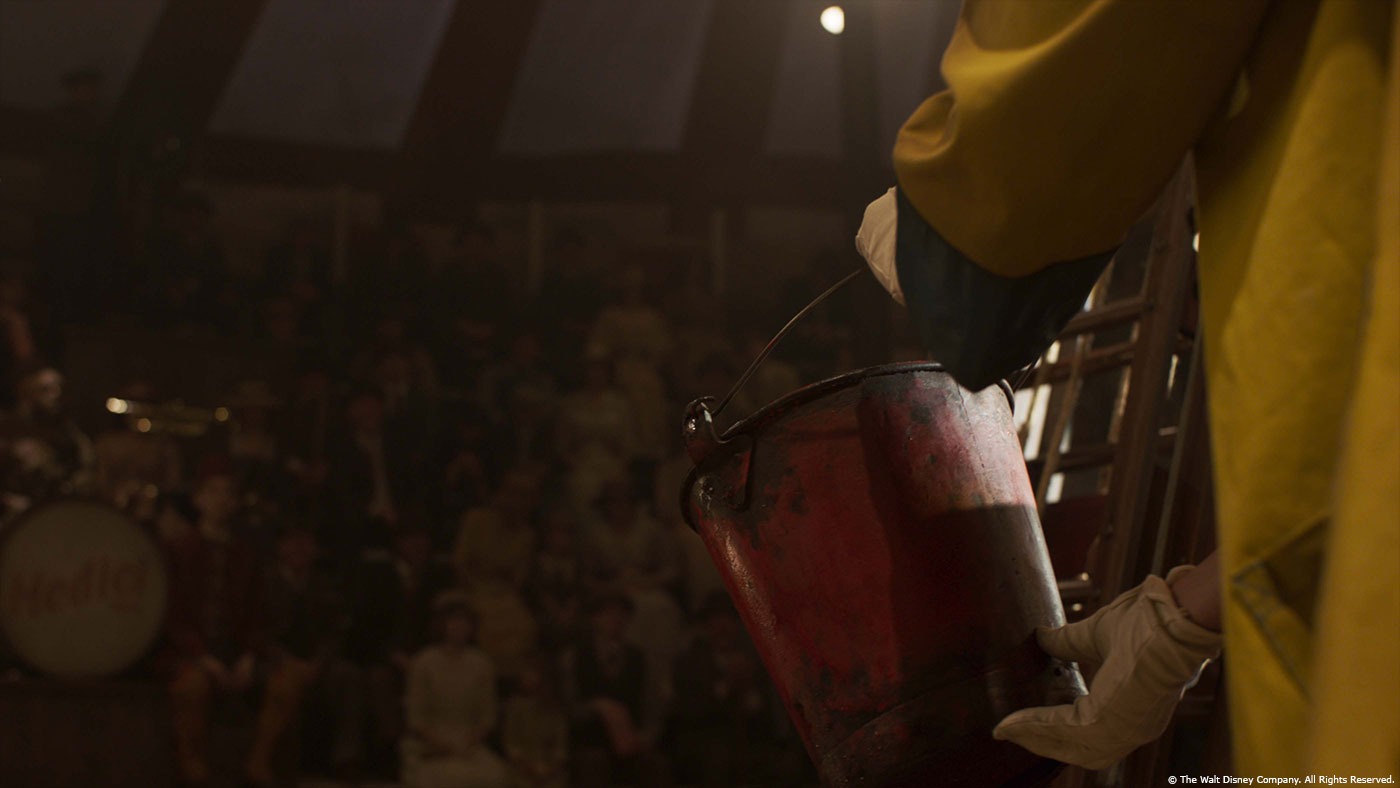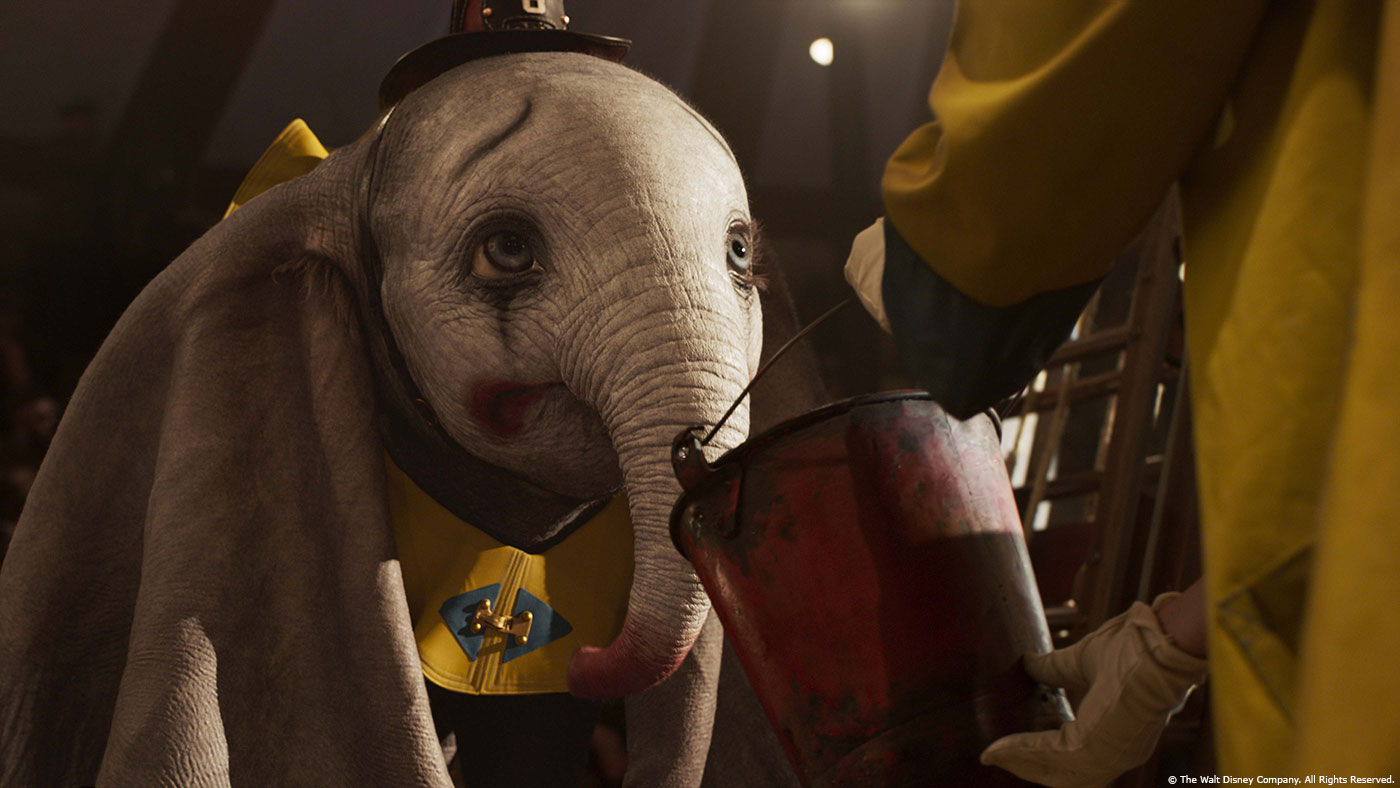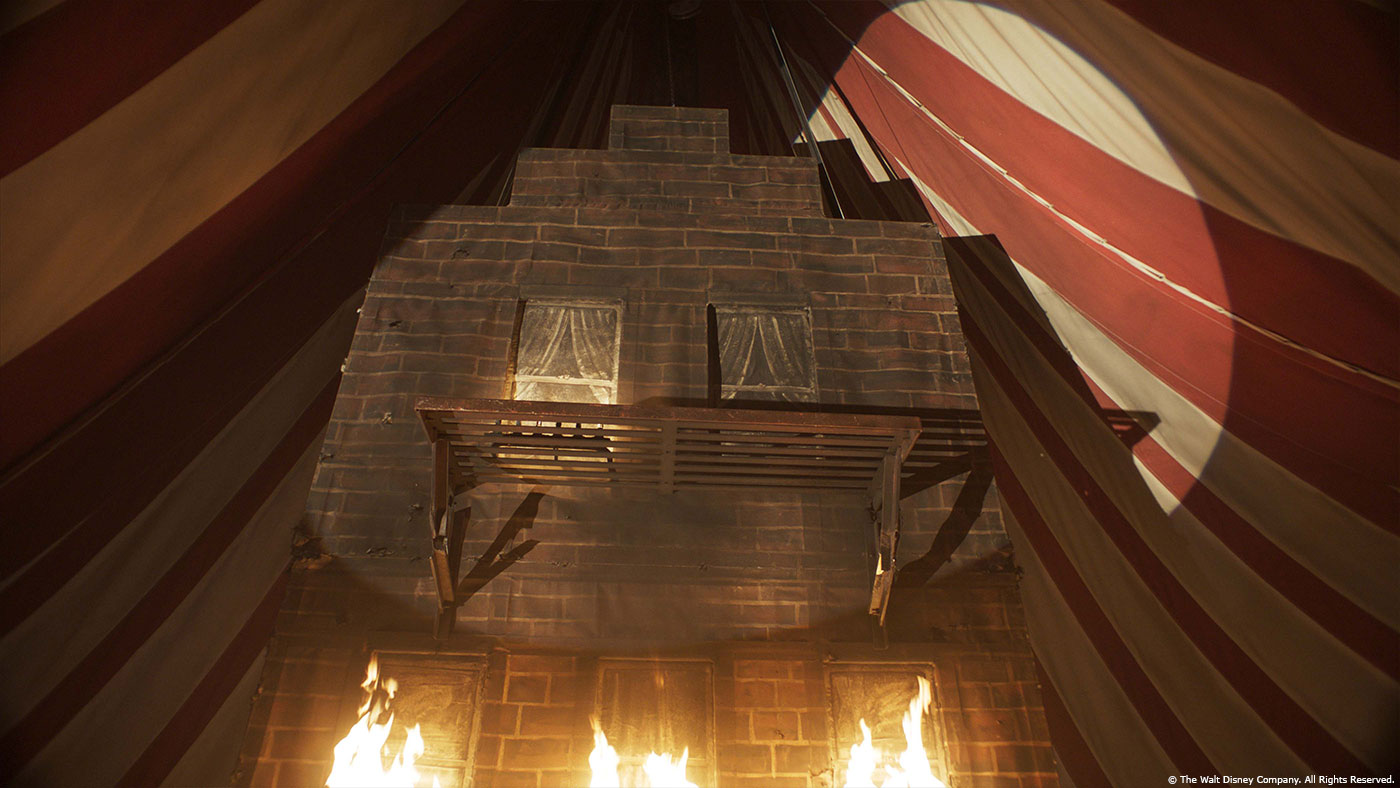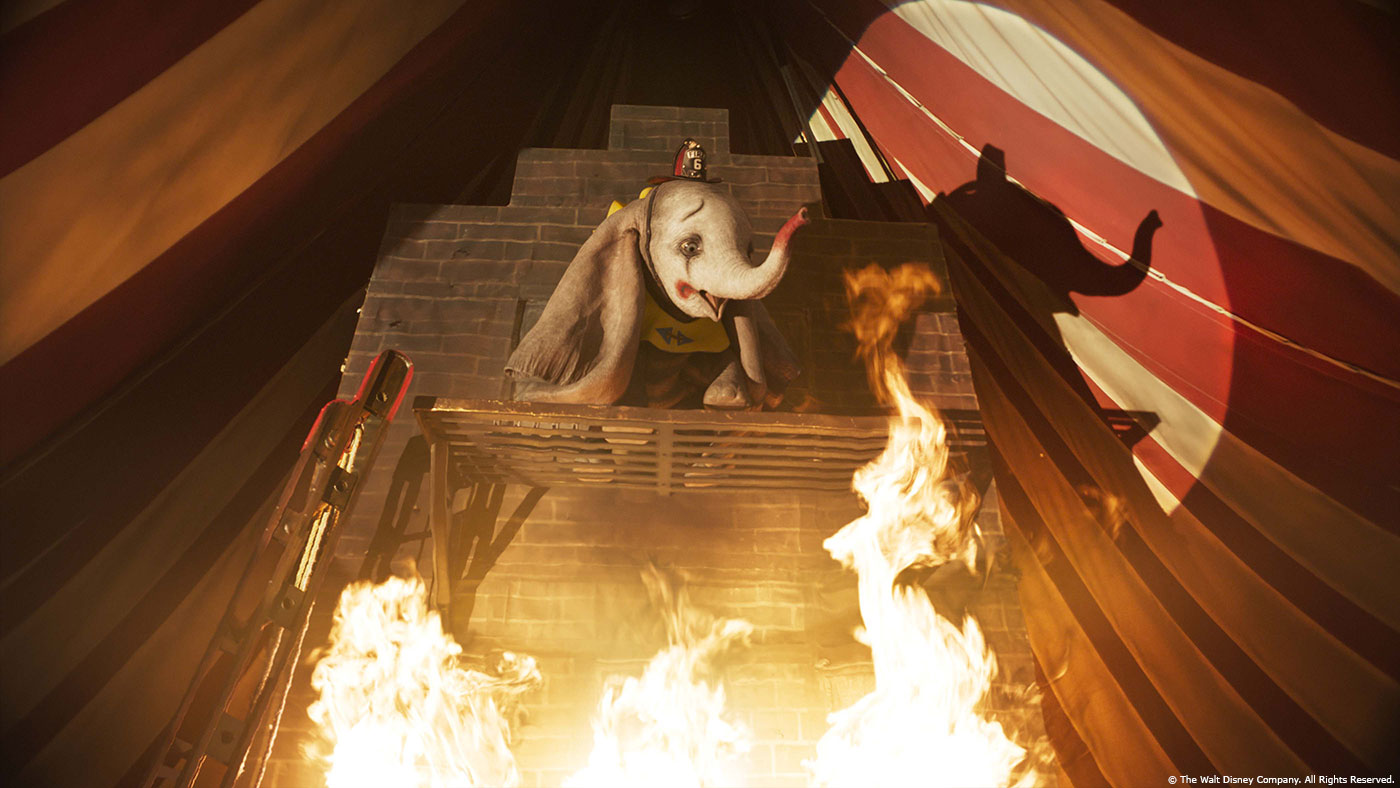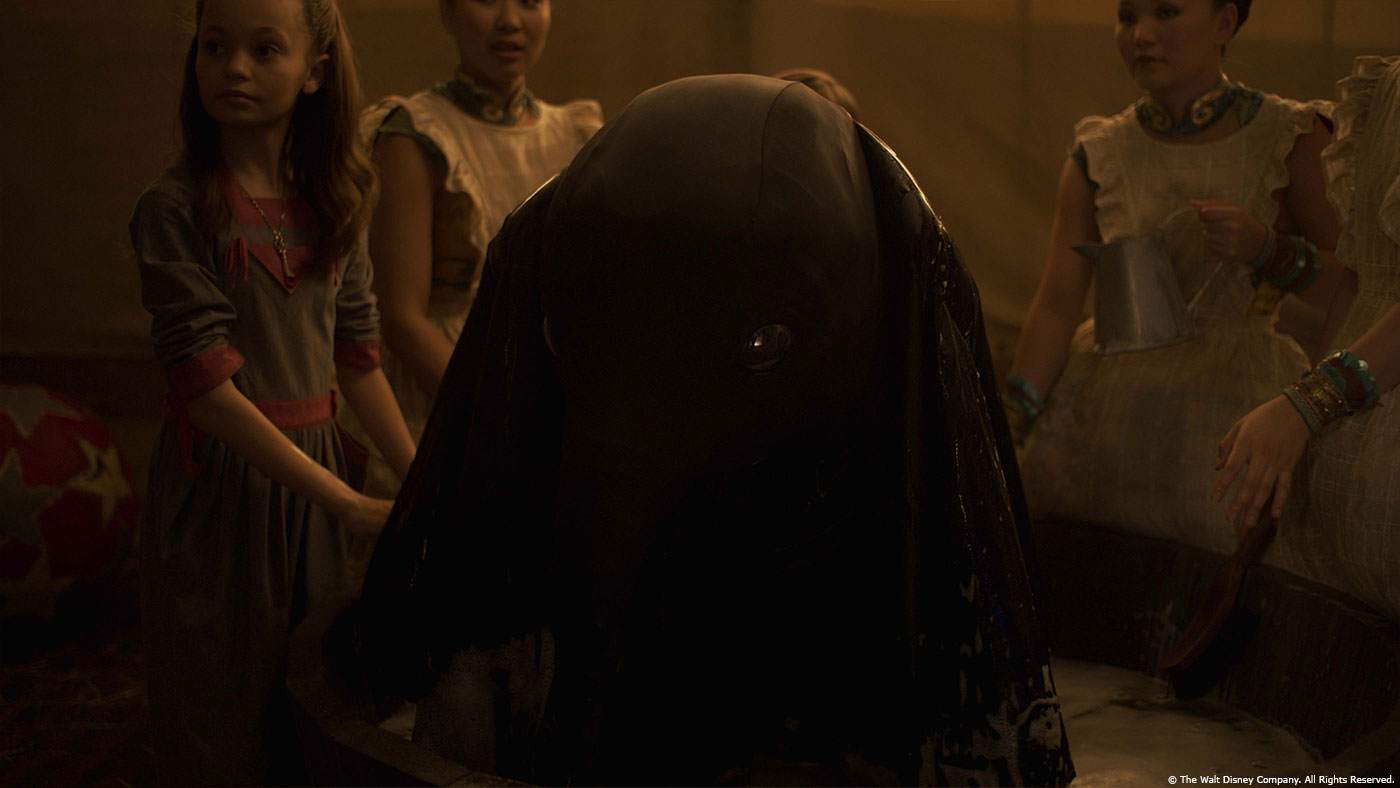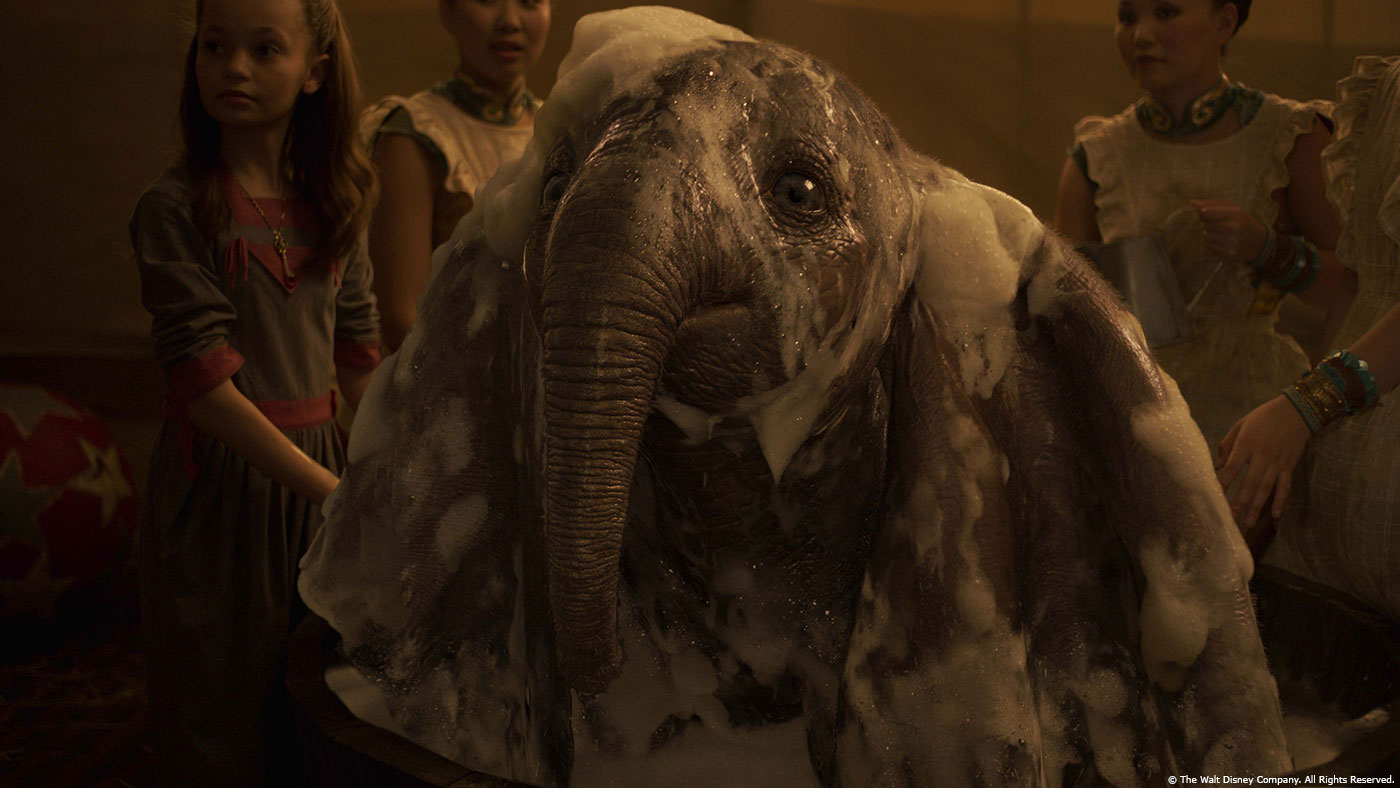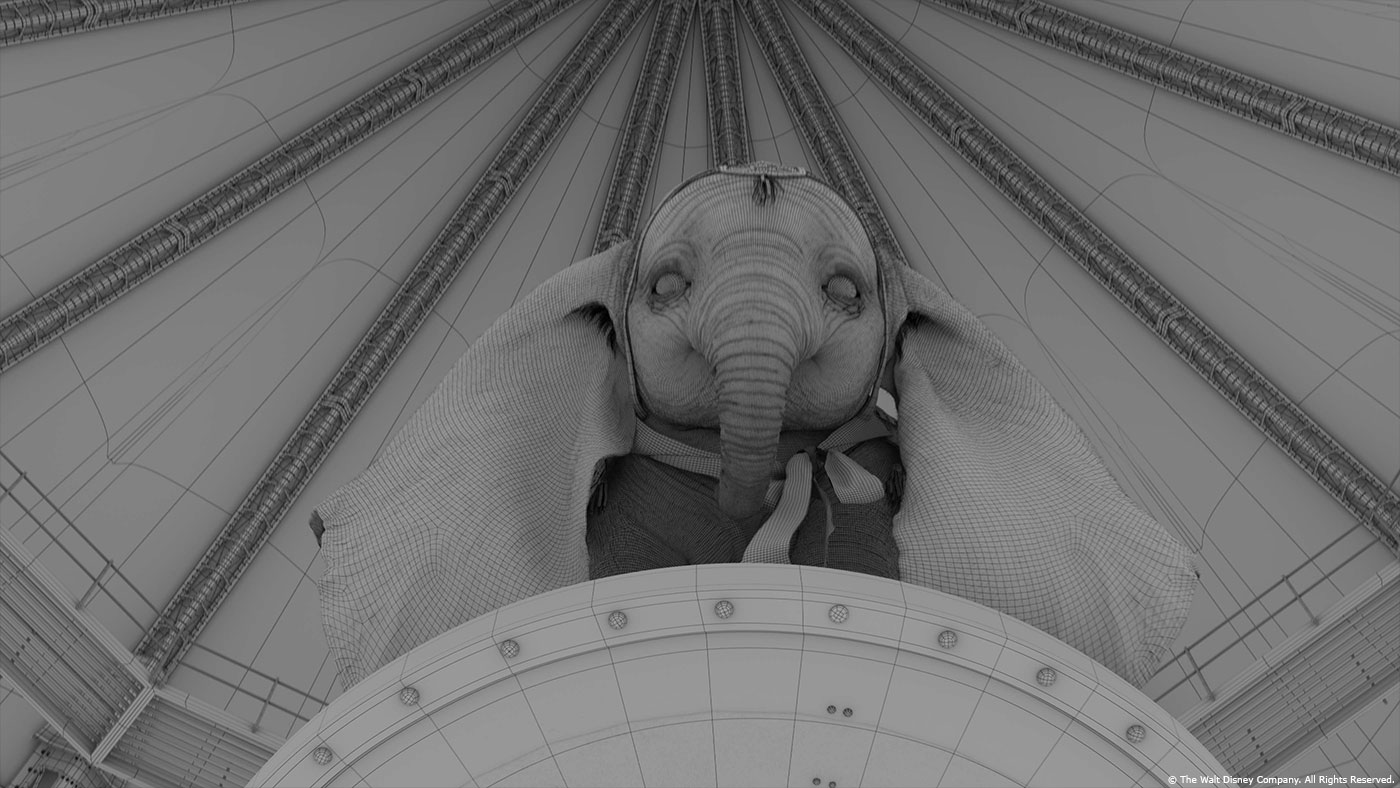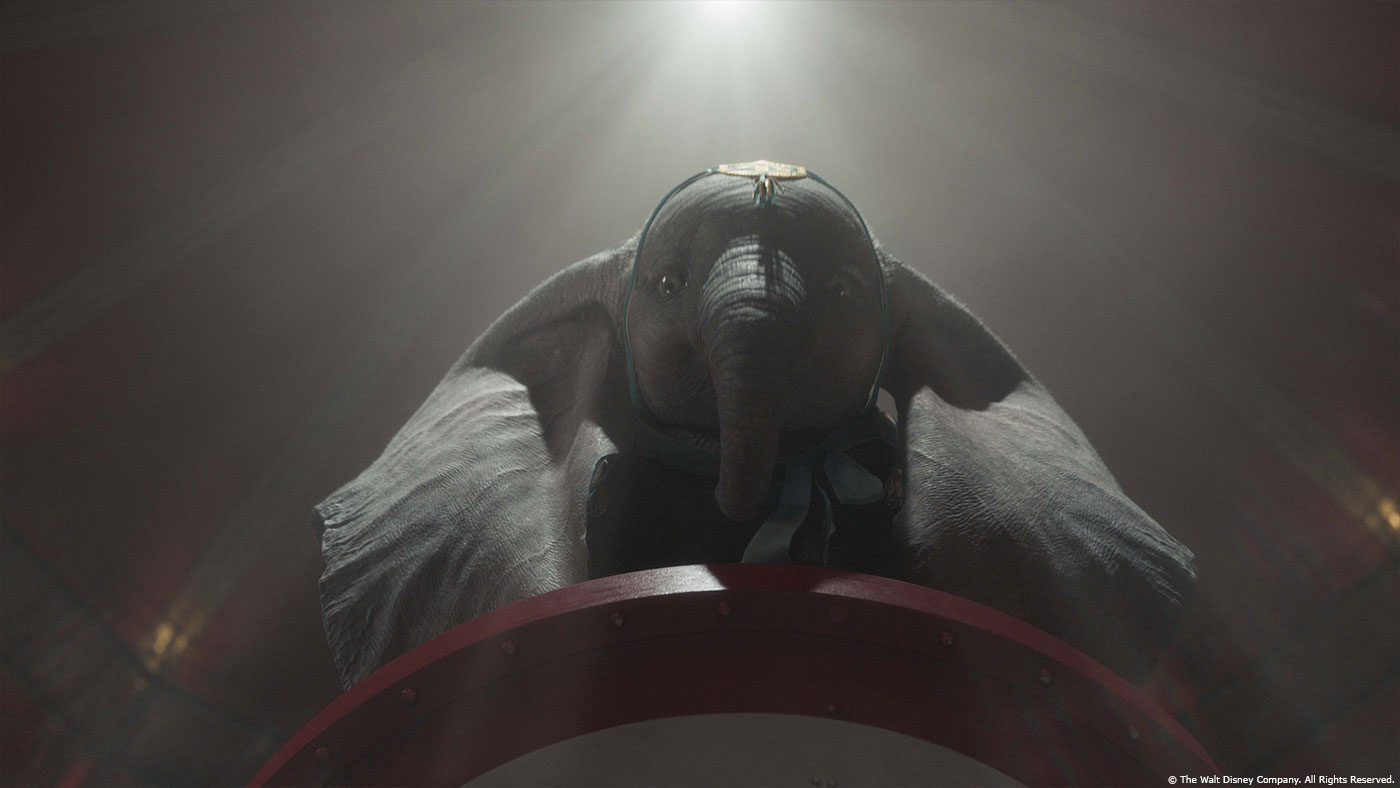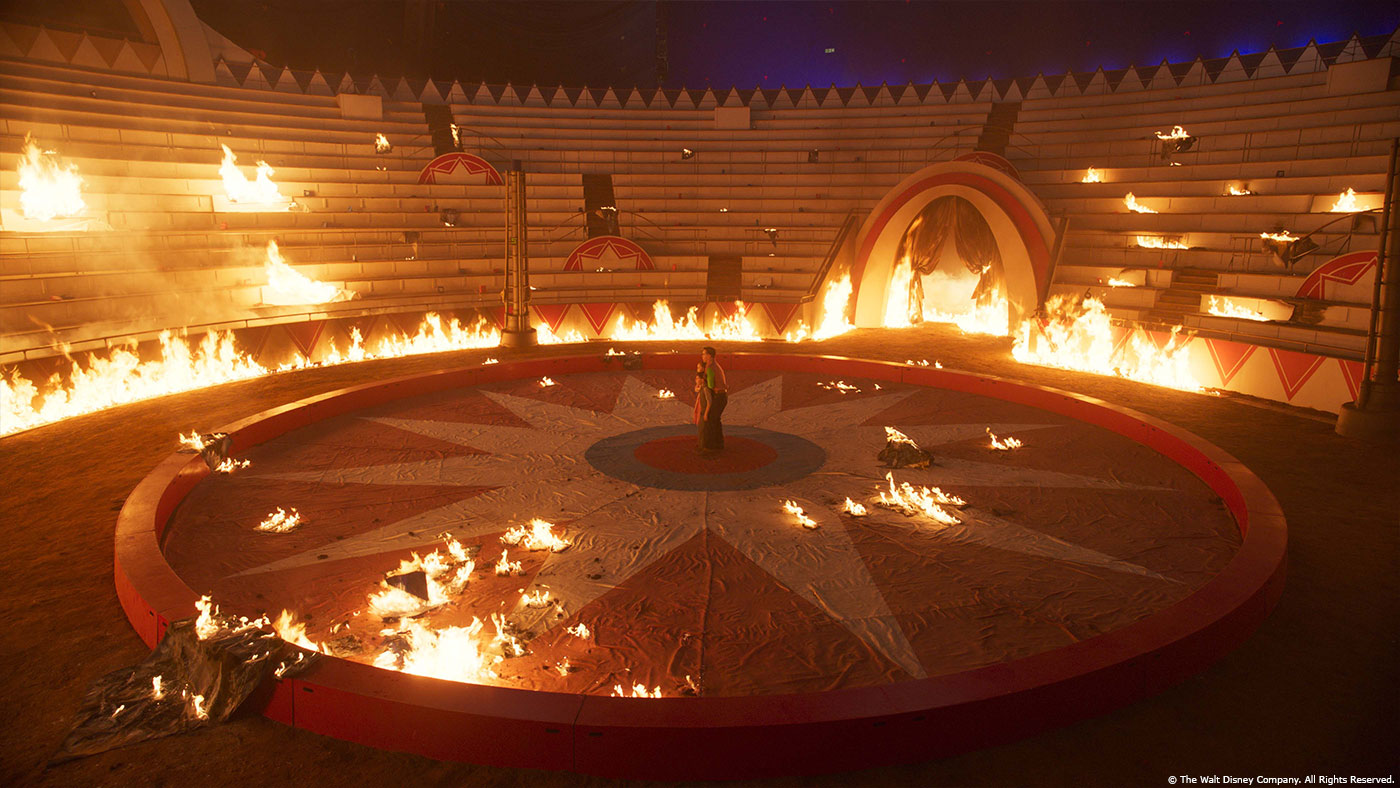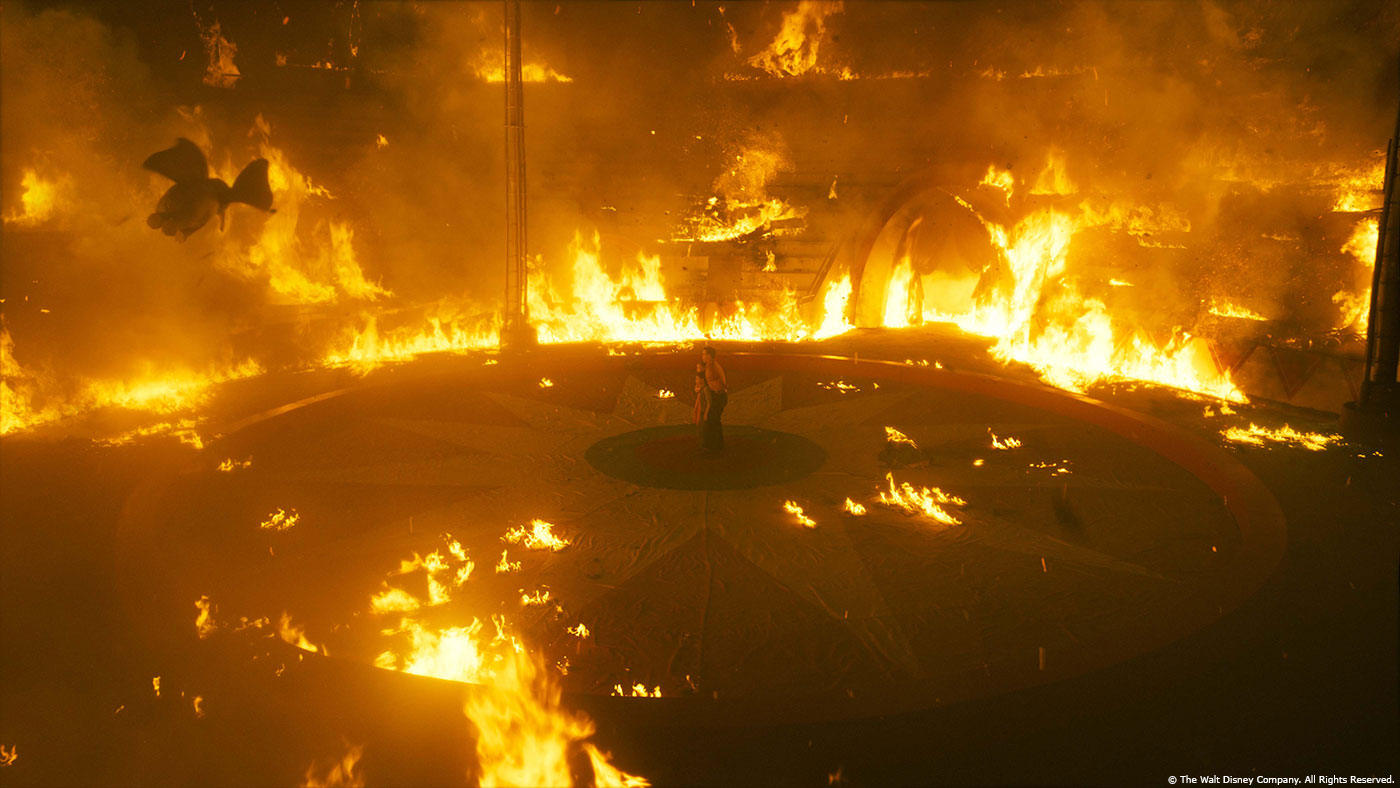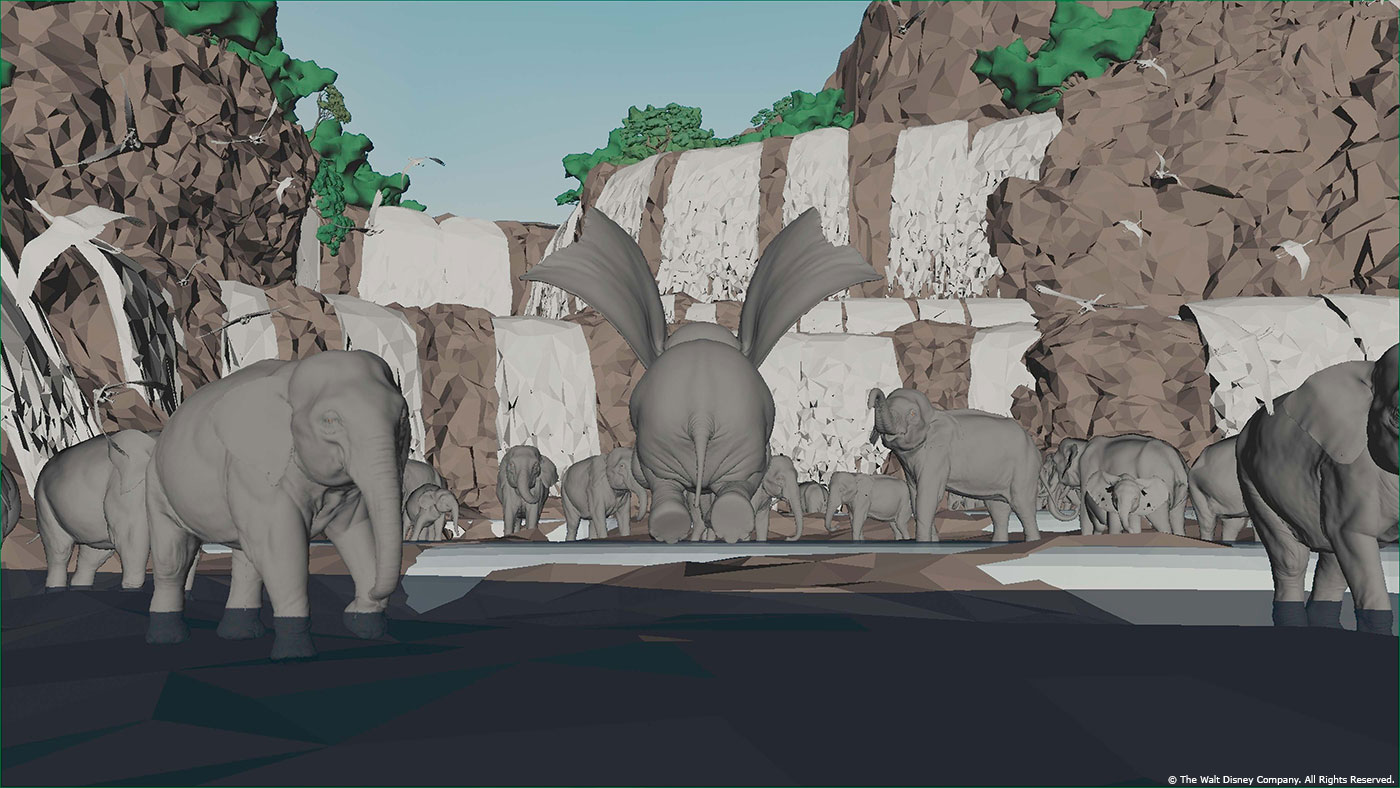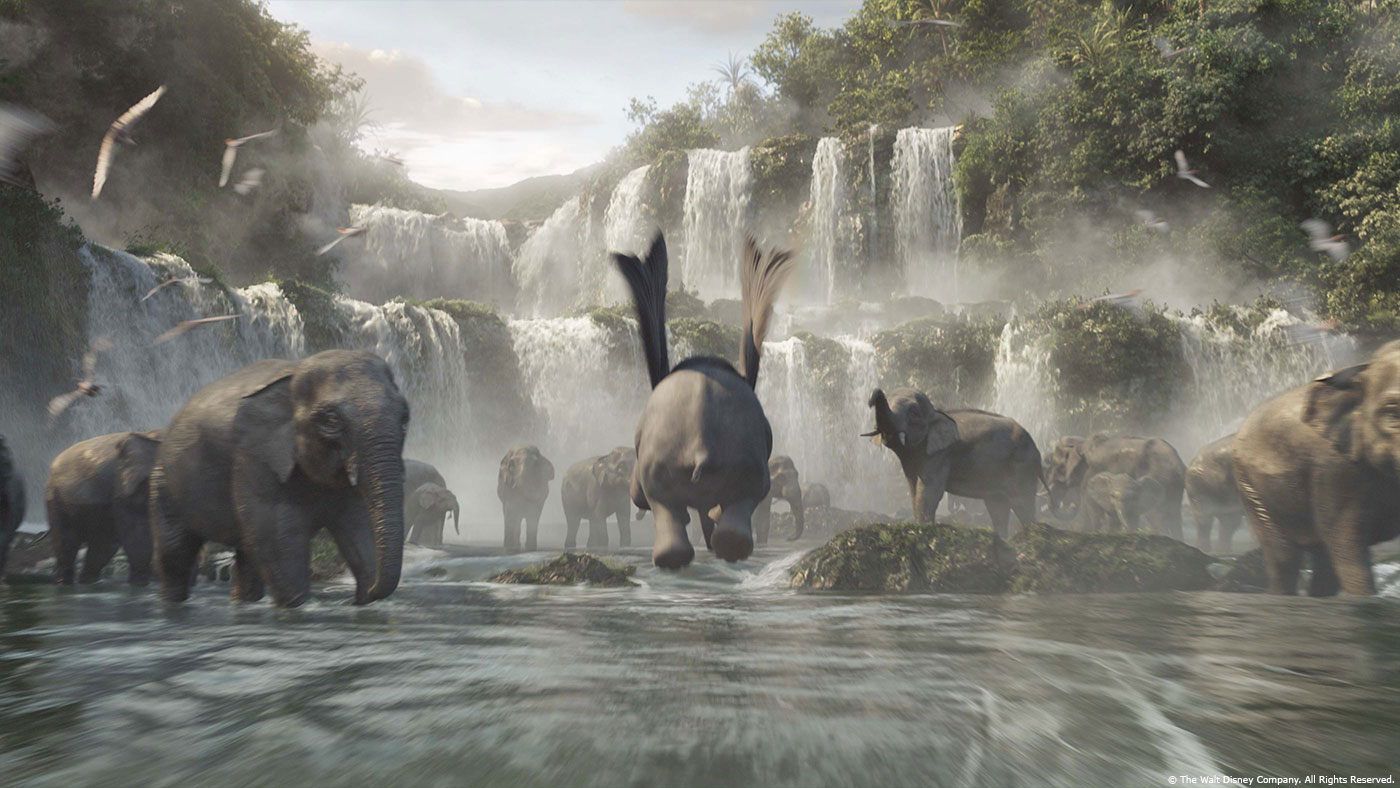In 2015, Richard Stammers explained the work of MPC on THE MARTIAN. He talks to us today about DUMBO.
How did you and MPC get involved on this show?
MPC have had a good string of successful collaborations with Disney recently, and after the Oscar winning work on THE JUNGLE BOOK, Tim felt pretty confident we were the right team to bring DUMBO to the big screen.
What was it like working with Tim Burton?
In prep, Tim’s focus was primarily on Dumbo’s design. We interspersed this with animation tests to help develop Dumbo’s character too, and this really helped set up a dialogue between Tim and myself through regular, but short presentations. Other aspects of the VFX were harder to pin down early on as Tim was not in a position to answer many other questions regarding environments and other visual effects requirements – much of that came later which meant we had to ‘over plan’ for many scenarios during the shoot, and focus on the critical tasks. During the shoot we’d get ad-hoc moments to discuss upcoming events and review asset progress. Post-production was a bit more structured, with regular reviews with Tim and his editor, Chris Lebenzon. The focus was always animation so these reviews would also be with our animation supervisor Catherine Mullan. Tim didn’t always give a lot of information but animation discussions were generally quite productive.
What was his approach and expectations about the visual effects work and especially with a full CG character?
Tim felt that Dumbo’s extraordinary design would not sit well in the context of ‘hyper-real’ locations and chose to control the look of the movie with staged based sets with expressionistic design and lighting. Dumbo had to look real enough to fit into a live-action film, but also possess endearing, adorably emotive qualities, that would move audiences to sympathise with him whilst fitting within the slightly whimsical world Tim was creating.
What was your feeling to work with such a legendary director and on a iconic show?
That was the biggest draw to me. Remaking DUMBO was going to be pretty fun, but with Tim at the helm, was what really appealed.
How did you organise the work with your VFX Producer Hal Couzens?
Having Hal on board was great. We really benefitted from his experience of working with the same film makers on MISS PEREGRINE. He also was able to supervise some of the splinter unit VFX shoots, which was awesome as it helped to spread the burden of the shoot. We worked on a plan to divide the work up, without sharing the elephant animation, as we both felt this needed to remain with the same team for character continuity. This meant MPC handled most of the work, including environments in which we see Dumbo. Some however, needed to be shared, as these were vast undertakings, so we looked for a second partner, to take on Dreamland specifically. Hal and I bid with a number of vendors for this, and chose Framestore as the best fit. We also needed a third vendor to handle Colin Farrell’s arm amputation, which we ultimately felt would benefit from being with one skilled team. We appointed Rodeo for this task. The Pink Elephant sequence was an unknown quantity, but we knew it would be a creative and technically demanding sequence, and my past experiences led me to Rising Sun Pictures for this work. In post, our shot count grew, so we took on additional vendors to help out. Our In-house comp team, assisted by Atomic Arts handled our crowd replication, bluescreen comps and miscellaneous effects. Rise in Germany came to our rescue on a number of occasions with a mixture of beautifully handled sequences.
Can you tell us more about the previs and postvis process?
Previs was an integral part of the project’s development. We opted to keep the look very simple, focusing initially on blocking key moments and master shots rather than cut scenes to inform Tim on specific actions, such as how Dumbo might fly in a confined space like a tent. The master scenes were used to program wire camera rigs to follow Dumbo’s complete flight path through the sets in order to shoot flying plates, POV’s and guide eyelines for the cast and audiences. Justin Summers, and his team at The Third Floor handled all the previs and postvis, which really helped with continuity throughout the project.
How did you work with the art department to design Dumbo?
To expedite Dumbo’s design approval prior to principal photography, a multi-pronged approach of sketches, concepts and maquettes started the process within the art department, initially led by production designer Rick Heinrichs. I took over this mantle and worked with character designer Michael Kutsche to complete the process as z-brush sculpts of a CG model. This was then posed to highlight particular story beats whilst referencing key moments in the original cartoon. Animation tests happened concurrently to validate every step, and to finalise his shape and proportions. Subsequently, full sized CNC milled sculpts were generated from the 3D design, and these were used for verifying the riding positions used by Eva Green when flying on Dumbo. They were also used to generate a number of performance suits, interactive parts and lighting references for the shoot.
Can you explain in detail about the various stages of the creation of Dumbo?
Wherever possible we sourced and used real elephant textures for the build of our elephants but Dumbo’s face was by far the biggest challenge, to find the right balance of realism but with an appealing and emotive face. The enlarged head, big blue eyes and reduced wrinkles stood him apart from any real elephants, so we had to make sure each minute detail on the face maintained the belief that he was real.
One of the main technical challenges for our CG elephants was how to replicate the complex skin movements seen in real elephants. To match this level of detail, we created a custom skin deformer, which simulated the wrinkle stretch and compression to a very high-resolution mesh. This shunned the need for traditional displacement maps in favour of high-resolution geometry, which required custom software tools to allow the lighting artists to work interactively before rendering commenced.
Tim’s desire for Dumbo’s face to be simpler and predominately free of hair and dirt made the lookdev and lighting much more challenging than copying an existing real elephant. Dumbo’s interaction with the environment helped and many FX sims of hay, water and dust were employed to keep him grounded in the plate.
Can you tell us more about his eyes?
Dumbo’s story is a very emotional one and as a non-speaking character we needed to convey his thoughts and feelings solely through his posing and animation. Dumbo’s eyes were the windows to his soul and their performance was fundamental in portraying his character and emotions. Less was more when it came to his overall facial animation and we established a subtle range of motion in which to work.
Can you tell us more about the animation work and especially when he is flying?
We needed to ensure that Dumbo moved realistically to fit within the live action so where possible we referenced footage of real elephants for his body motion. However, Dumbo’s ears were a huge part of his character and couldn’t be excluded from any animation presentation, so we developed a basic cloth system within the animation rig puppet. The animators could then pose and animate the ears more easily, allowing us to present a more natural behaviour at the animation stage, before final ear dynamics were generated. Weight and heaviness of the ears were key to his character.
Tim really wanted to feel Dumbo’s joy and liberation when he flew, in contrast both physically and emotionally to his heaviness on the ground. Some of the most challenging shots in animation were the take offs. We needed to portray enough weight and effort in these moments to suspend the audience’s disbelief, bridging his heaviness on the ground with his natural ease in flight. To help sell the improbable physics of Dumbo’s flight we increased the size of his ears slightly in flying scenes to give him a bigger wingspan. Nature reference of bees, butterflies, birds and manta rays were helpful in informing flight mechanics.
How did you manage his interactions on-set for the framing and with the actors?
For interaction with the cast, performer Edd Osmond stood in for Dumbo on set and was critical to facilitating physical interaction and eyelines. Having Edd there allowed Tim to direct a performance and we would always do our first rehearsal and takes with Edd in place. We predominantly used a slimmer version of the Dumbo suit to minimise paint out which we dubbed ‘Ant Man’, because of his freakish look. Clean plates or takes without Edd aided paint out.
One of the most complex moments of interaction occurs when Dumbo is given a bath. Edd used a black version of the Dumbo suit so we could use some of the water and foam interaction from the cast washing him. Our animation developed beyond the plate performance and so re-projection of digital hands was used to make the connections work. CG foam sims and projected elements created the voluminous foam with dripping elements added as an emotional representation of Dumbo’s feelings.
How did you work with the SFX teams?
Special Effects Supervisor Hayley Williams and her team were vital partners during the shoot. They did a great job of providing interaction for Dumbo and other CG characters, with rigs to move set pieces and dressing appropriately. Each gag was planned and tested and shown to Tim for approval. Beyond the flying rig (outlined below) the biggest task was the burning of Dreamland. For the 3rd Act’s fire destruction, the special effects team rigged the Coliseum’s set with an extensive network of gas pipes, plumbed to 2 liquid propane tankers. This allowed the 360-degree fire system to be controlled remotely, so flames could be ignited in sequence and get a progression of the burn through the set. Further practical destruction was added by dropping fiery debris from above. The VFX teams extended the sets and enhanced the fire further by adding more flames, smoke, ash and embers.
How did you approach the challenges of the flying shots?
For the cast members to fly on Dumbo, virtual production techniques were employed to aid the extensive planning required for the shoot. Kaya Jabar, from The Third Floor handled the extensive technical requirements to combine the work from each department. The animation team refined previs sequences, and incorporated these to match-moved background pates. These were subsequently were used to program a motion base that was adapted by our special effects team. Kaya assigned Dumbo’s body and head animation to the 6-axis rig and head actuators, and Dumbo’s translation through space was allocated to a camera solve for a Spider-cam rig. Wind and animated lighting cues were added and the whole process was operated and triggered through a Concept Overdrive Motion Control System. Eva Green and the children, Nico Parker and Finley Hobbins got to ride this rig, with each wide or mid shot specially programmed. On-set compositing enabled Tim to approve performances in context to the animation within minutes of each take being captured. An additional camera captured CU shots of the actors simultaneously or we’d run a longer flying cycle for more generic moments.
Later in the movie, we discover Dreamland. How did you design and create this huge environment?
News of Dumbo’s flying abilities earns him headliner status, and a star turn at Dreamland, a Coney Island amusement park. This was our most extensive CG build and served as a backdrop to much of the third act, as extensions of the practical sets, or full CG backgrounds of any location around the park. Framestore handled this work led by supervisors Rich Hoover and Hubert Maston. Their team expanded the sets referencing production designed artwork and period photographs of Coney Island. The park was completely animated with all the rides moving, and populated with CG crowds, built from production photography of costumed extras. The CG builds extended to the surrounding streets and Manhattan skyline, which were designed to fit within Tim’s expressionist world.
What kind of references and indications did you receive for Dreamland?
Rick Heinrichs and his team did an extensive design of the whole park with details focused mainly on areas of set builds and overall silhouettes of the horizon line. Framestore helped model some of the initial ride designs to expedite the art department’s layout, before the final handoff to VFX. There were still lots to build and detail further, which was aided by art department drawings of each ride, but Framestore’s team brought so much more to the final build.
How did you handle the destruction of this massive environment?
Framestore’s CG build was rigged for destruction. Huge CG simulations handled much of the collapsing geometry and associated fire. An extensive fire element shoot was also undertaken so 2D cards could be added to enhance the shots further and help with the integration in the plates.
Can you tell us more about your collaboration with the vendor VFX supervisors?
I had a really great team. For a long period of prep and shoot my main collaborator was Catherine Mullan, MPC’s animation supervisor. So much of the shoot planning was animation driven and having her to bounce ideas off was really great. She was often on set with me and would guide Edd Osmond via a live microphone during takes to help get the Dumbo performance we wanted. As the Dumbo’s asset started to develop Patrick Ledda joined the MPC team as VFX supervisor, and his lookdev background proved essential to getting Dumbo looking so great. He wrangled an awesome team of artists to really nail all the details, whilst managing a growing team of environment, lighting and FX artists that would deal with Dumbo’s interaction and the world around him. Patrick and Catherine were both based in London with the animation and asset teams, which was great for the detailed reviews we needed. DFX supervisor Carlos Caballero Valdes headed the MPC team in Montreal and oversaw environment development and Dumbo’s integration with multiple comp leads in Montreal and Bangalore.
Richard Hoover spearheaded Framestore’s work and proved to be a reliable and creative ally for developing the look of the Dreamland theme park, and planning the park’s fire destruction. He confidently handled our fire element shoots too. Hubert Maston took over from Rich during our long post period and brought boundless energy to the latter stages of delivery.
Martin Lipman supervised the team at Rodeo, whose work expanded beyond the technically complex digital amputations of Colin Farrell to included some very challenging environment work too, specifically for the open train journey montage. For this we worked on multiple ideas as concepts, to get a buy off from Tim. For some shots Tim wanted to use IMAX stock footage of trains, which required significant replacement work, so Martin’s team wedged multiple concept options to see how far we needed to go. The concepts became a basis for the matte paintings, which were projected onto geometry. It was an efficient way to work on such a wide variety of terrains and lighting conditions.
Our team at Rising Sun Pictures were amazing. The Pink Elephant sequence was challenging in so many ways and they remained patient through its slow development as we struggled to find what Tim wanted from the sequence. Dennis Jones led the team though many iterations and animation proposals all to no avail as there wasn’t the right music available for us to work with. We’d nailed the look of the bubbles early on, so rather than hanging in limbo, Dennis and I decided to bite the bullet and revert to the original cartoon’s music as a guide track. Building upon this gained some traction, which turned out to be very productive, in terms of informing the edit and the composer, Danny Elfman. The final music track came so late in post, so we had to animate to a click track, and refine once we had some final cues. As the sequence came together Tim added over 20 new shots in the last few weeks of post so Dennis and I had to work on an efficient plan with minimal steps to finish the shots in time.
Lev Kolobov took over supervising duties for our in-house team as their workload grew to around 300 shots (and many more temps). He also oversaw additional work out-sourced to Atomic Arts. Lev really helped streamline the process, by working with the individual artists and presenting to me ad-hoc when time allowed.
Jonathan Webber and his team at Rise, provided excellent support right when we needed it, with no job being too small. They tackled every sequence or odd shot we gave them with precision and efficiency, so we kept feeding them additional work as new briefs emerged from the evolving edit.
The vendors are all around the world. How did you proceed to follow their work?
We’d have big reviews at MPC London twice a week, which involved simultaneous links to their teams in Montreal and Bangalore. For the rest, we had cineSync reviews 2-3 times a week. Framestore and Rodeo’s teams were in Montreal so this worked well for our afternoons in London. We’d review with RSP (who were in Adelaide) first thing in the morning so they got the worst of the time differences. Nearly all the work was reviewed remotely, but Hal and I visited Montreal a couple of times during post-production and this was very productive having some face-to-face time with the other supervisors.
Which sequence or shot was the most challenging?
The Pink Elephants were probably the most challenging as a sequence, as it took so long to coalesce with Tim. Despite a long slow burn on this scene, it really only materialised in the last few weeks.
Is there something specific that gives you some really short nights?
Finding what Tim wants is sometimes really challenging. We often didn’t get clear briefs of what was needed, and sometimes only a hint of which direction to pursue. So for me, it was hard to find that balance of how much to interpret into a decisive brief for my team, versus wedging multiple options to present to Tim. Skies were particularly tricky and Tim wanted to control the look of them all collectively so he could see the ‘storybook look’ of them progress through the whole movie. This involved wedging hero shots from every scene before approving any single sky. This set our schedule back a long way!
What is your favorite shot or sequence?
When Dumbo is enrolled in the clown act of Medici circus. I think his clown make-up looks great and it helps emphasises his eyes. Some of the shots at the head of the scene before, and as he’s led out are really lovely.
What is your best memory on this show?
I think seeing the motion base work come together, and getting Tims’ approval on our first flying rig shot. So much time was invested in getting the cast to fly on Dumbo and capturing their live action element, especially as it required animation approval very early on to drive the motion base. We had very real concerns that some part of the process wouldn’t come together in time or simply Tim wanted to do something different on the shoot day. It was a huge relief to see the on set comps working and Tim liking them!
How long have you worked on this show?
Two and a half years.
What’s the VFX shots count?
There are 1766 shots in the final cut, which accounts for 93 minutes of the movie. With vendor sharing of shots it was more like 2200 though!
What was the size of your team?
We have over 750 credited to VFX, but the team size was closer to 1000, as not all team members qualified for a screen credit.
What is your next project?
TBD!
A big thanks for your time.
WANT TO KNOW MORE?
MPC: Dedicated page about DUMBO on MPC website.
Framestore: Dedicated page about DUMBO on Framestore website.
RISE: Dedicated page about DUMBO on RISE website.
Rodeo FX: Dedicated page about DUMBO on Rodeo FX website.
Atomic Arts: Dedicated page about DUMBO on Atomic Arts website.
The Third Floor: Dedicated page about DUMBO on The Third Floor website.
© Vincent Frei – The Art of VFX – 2019


